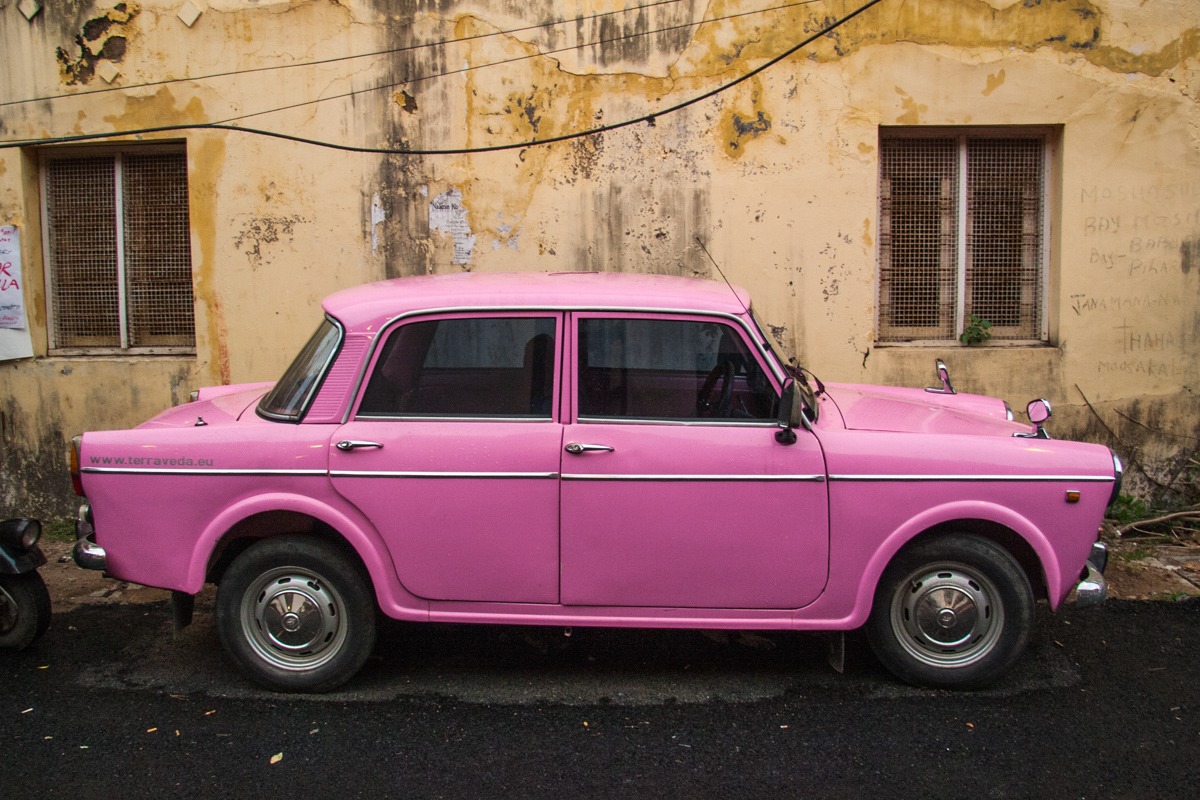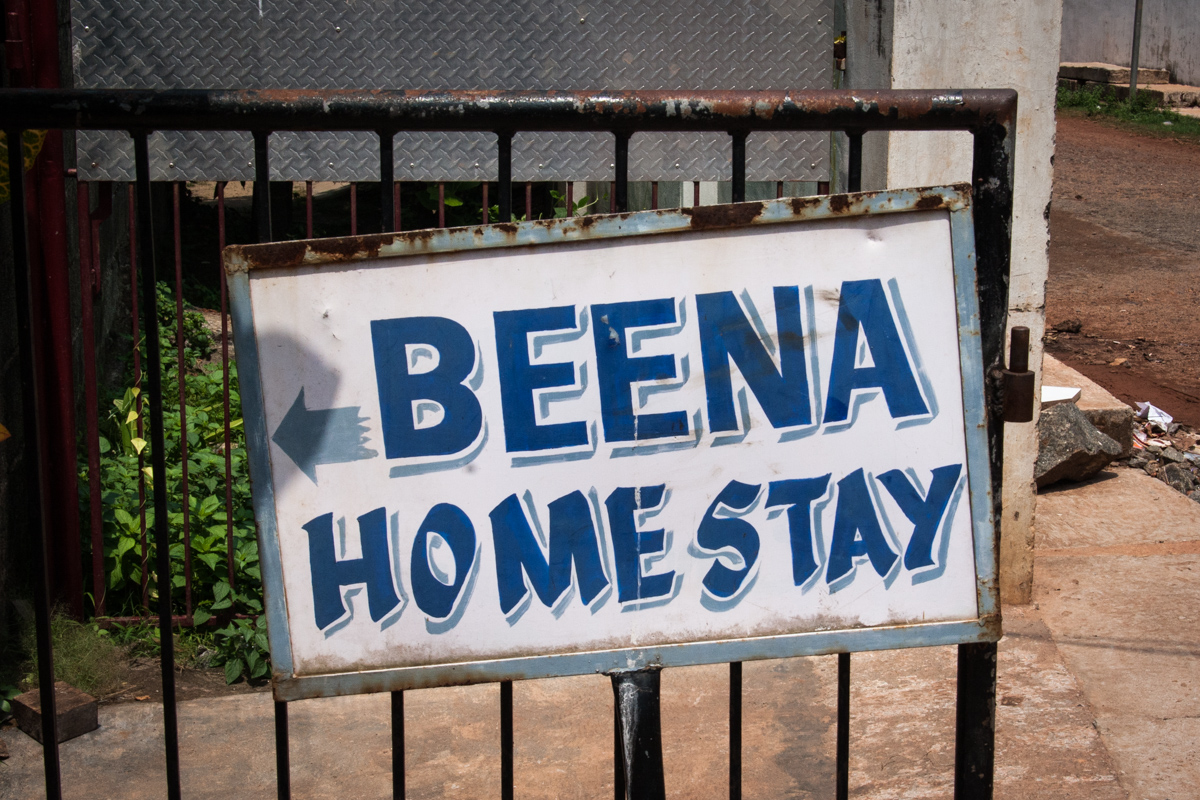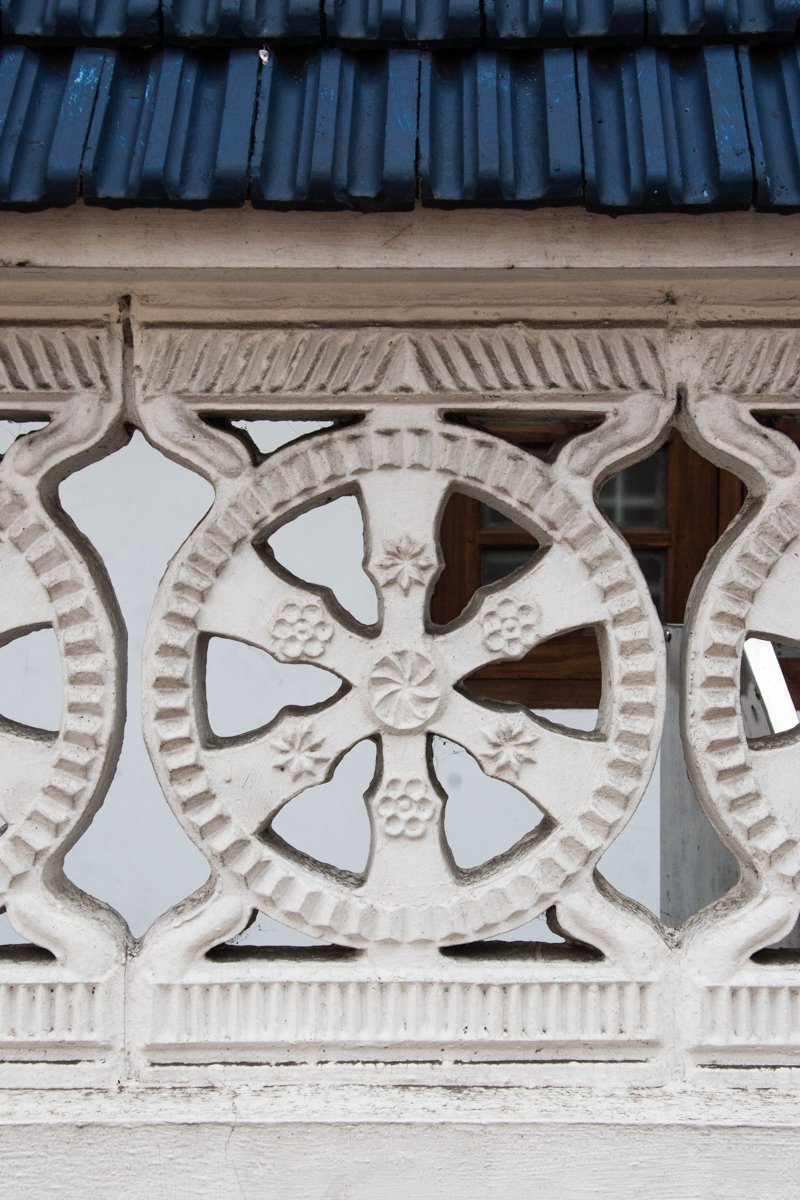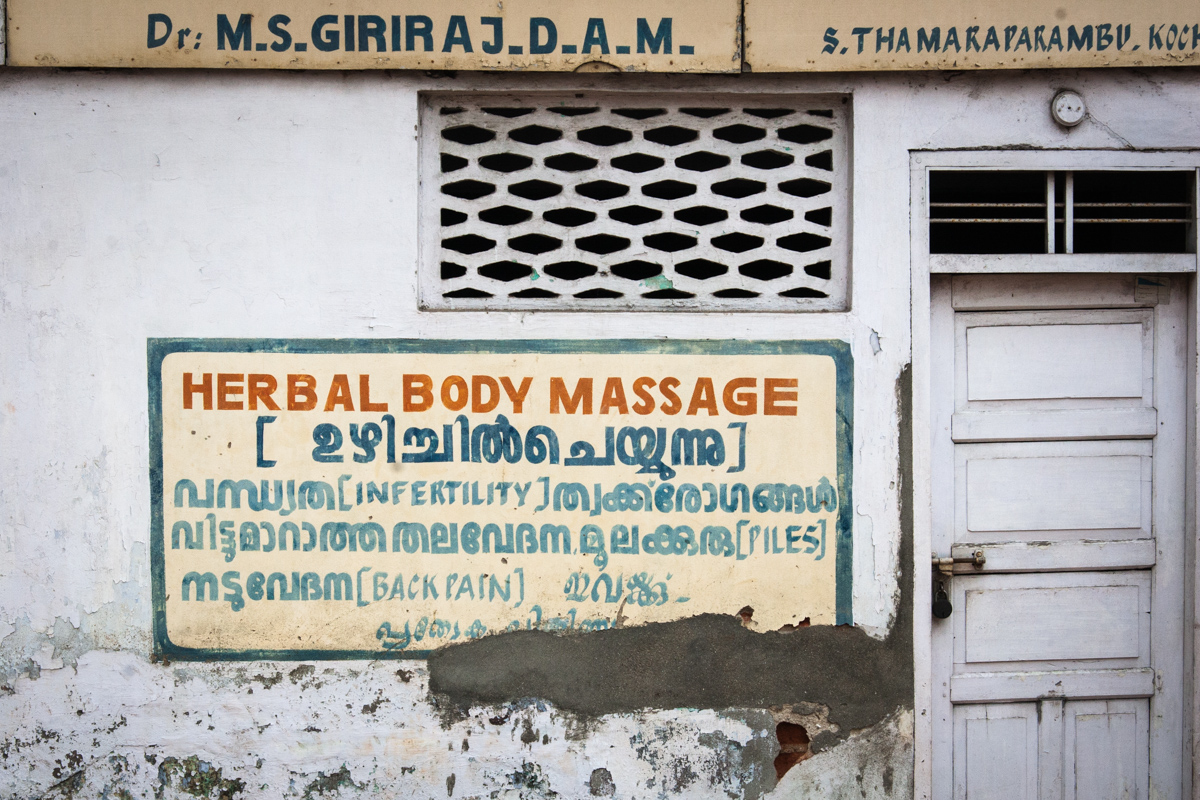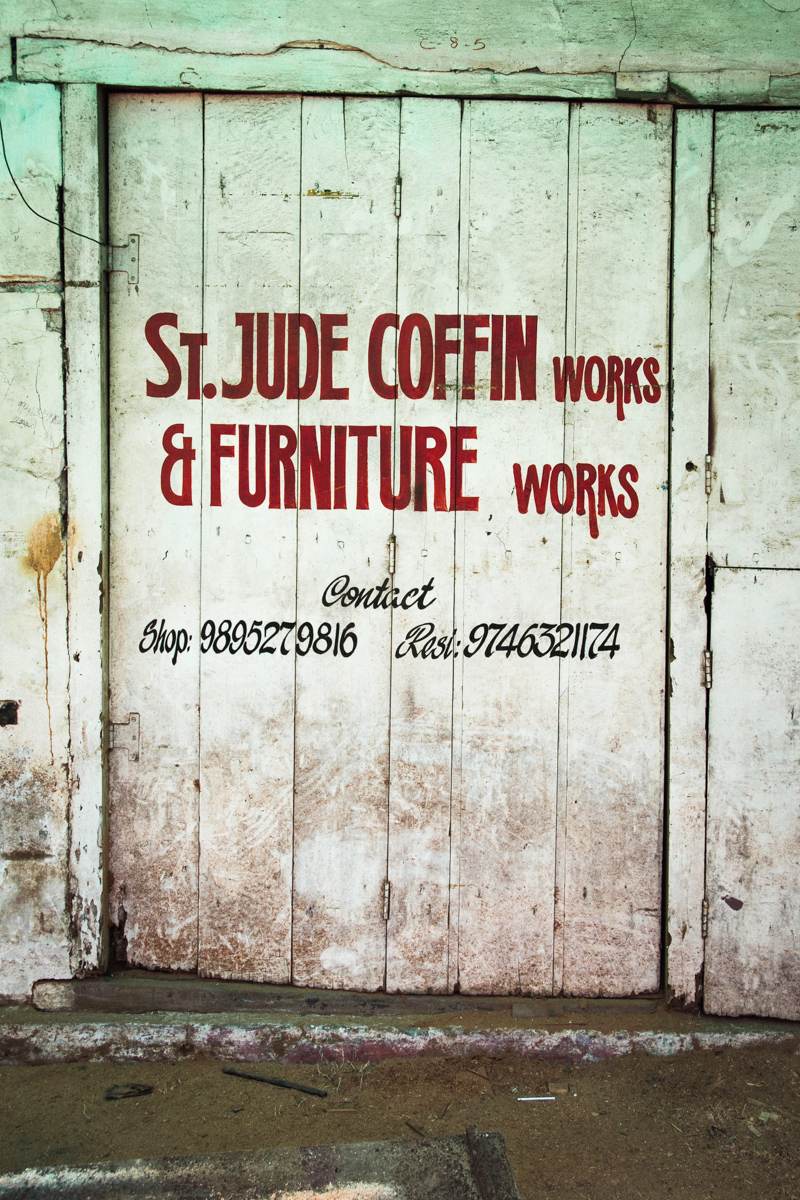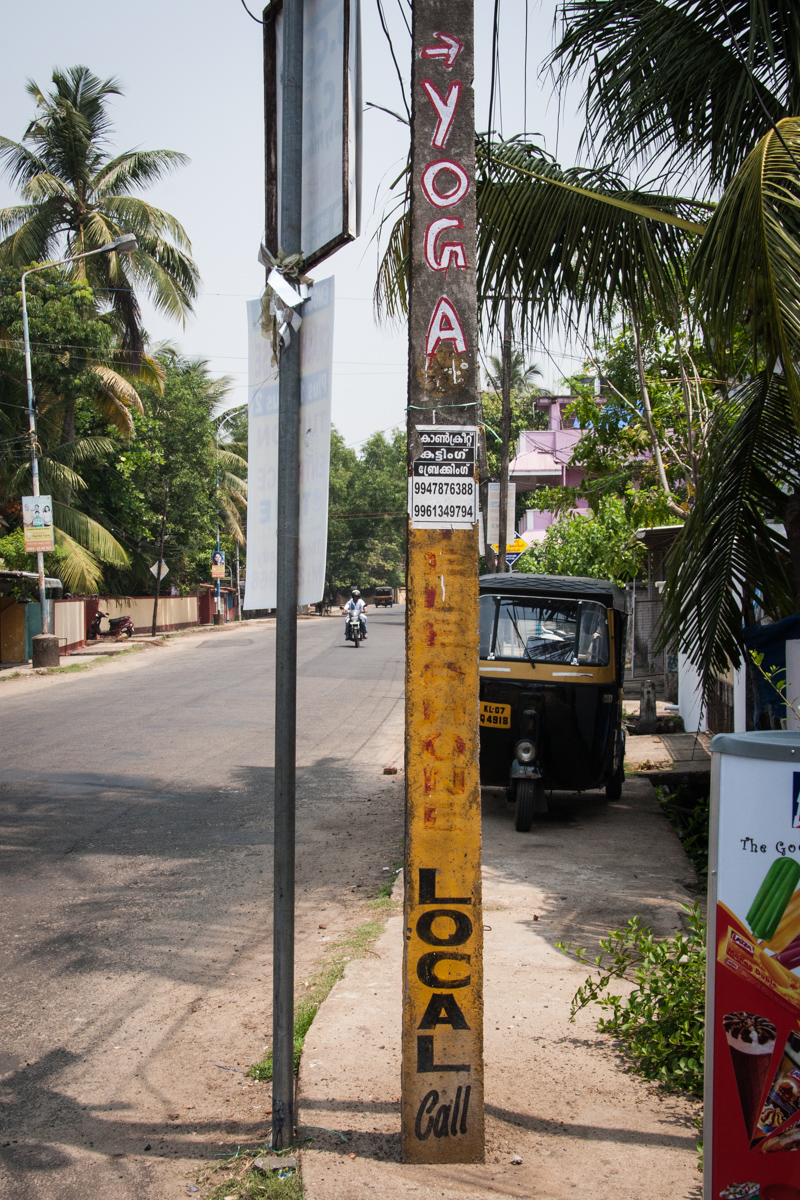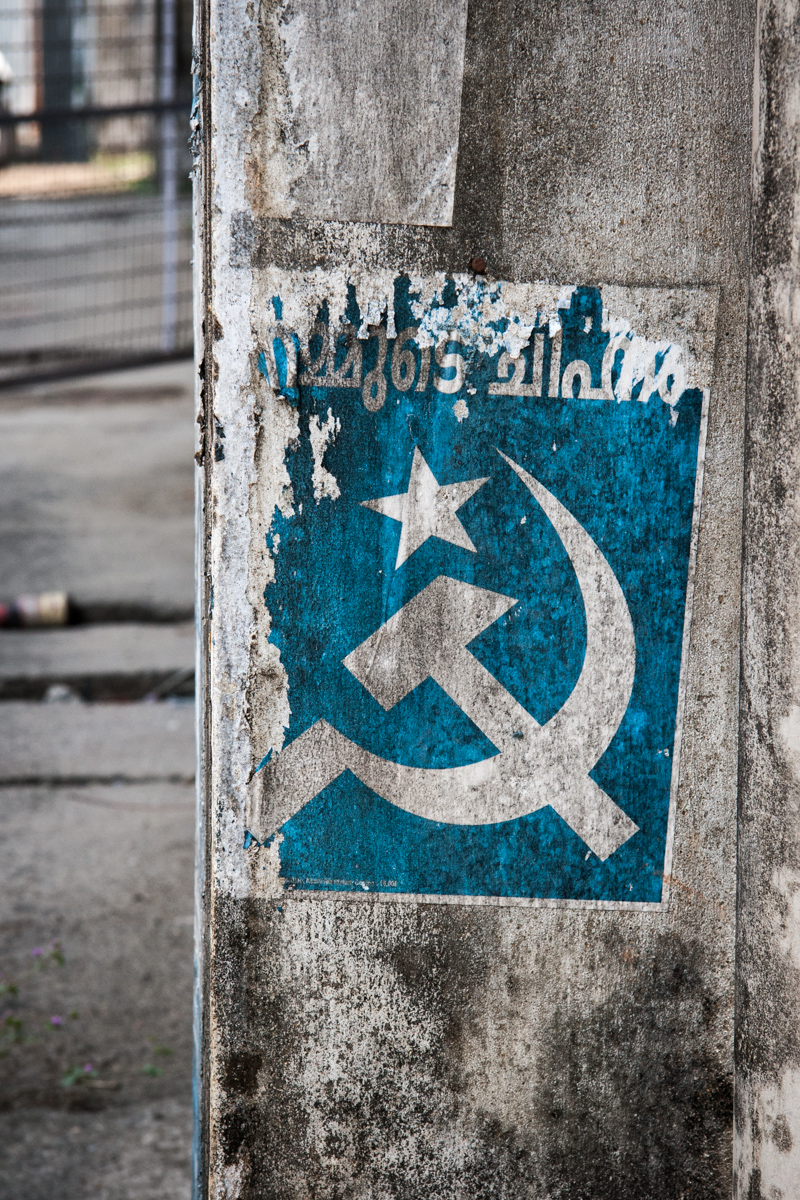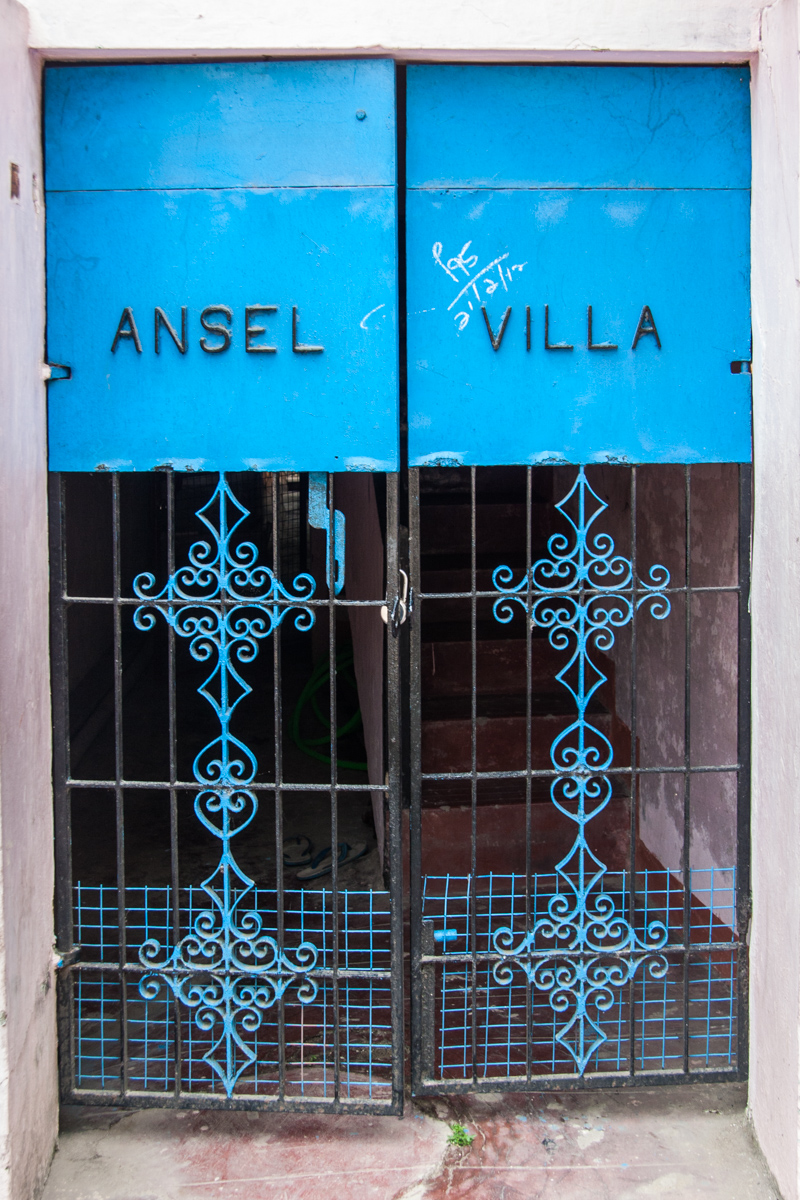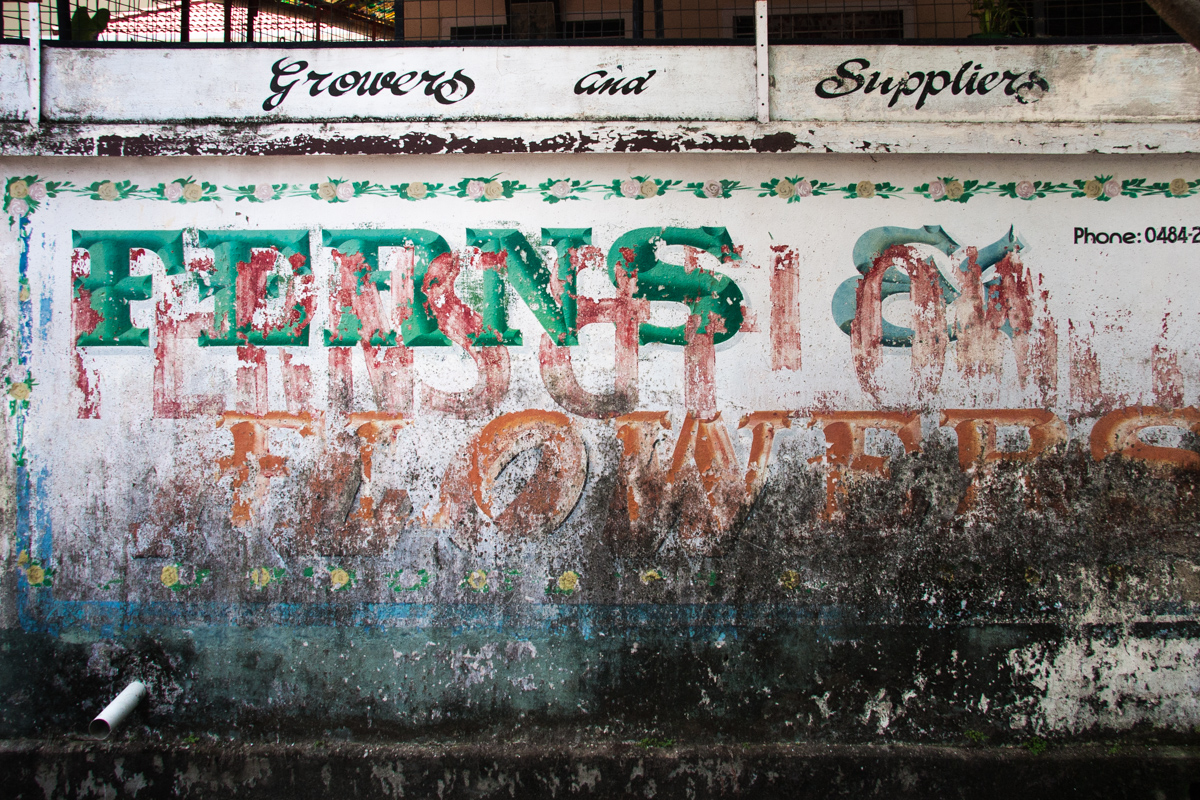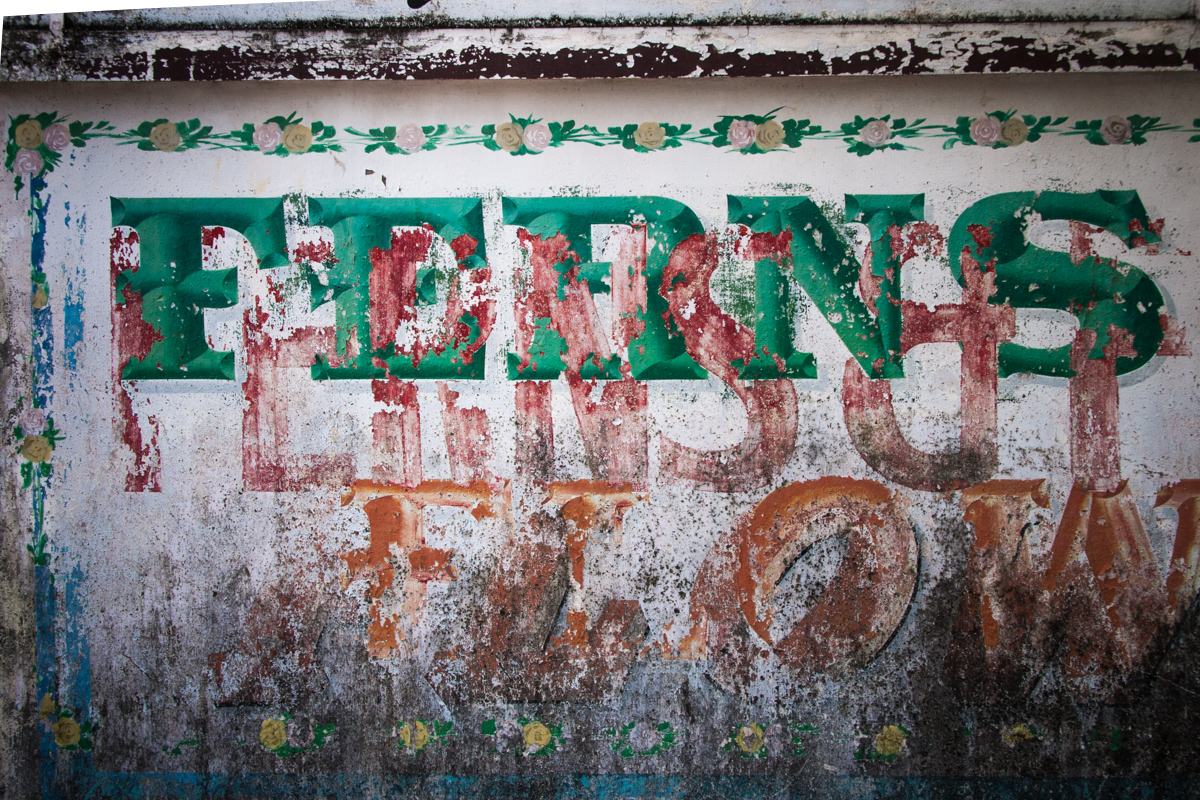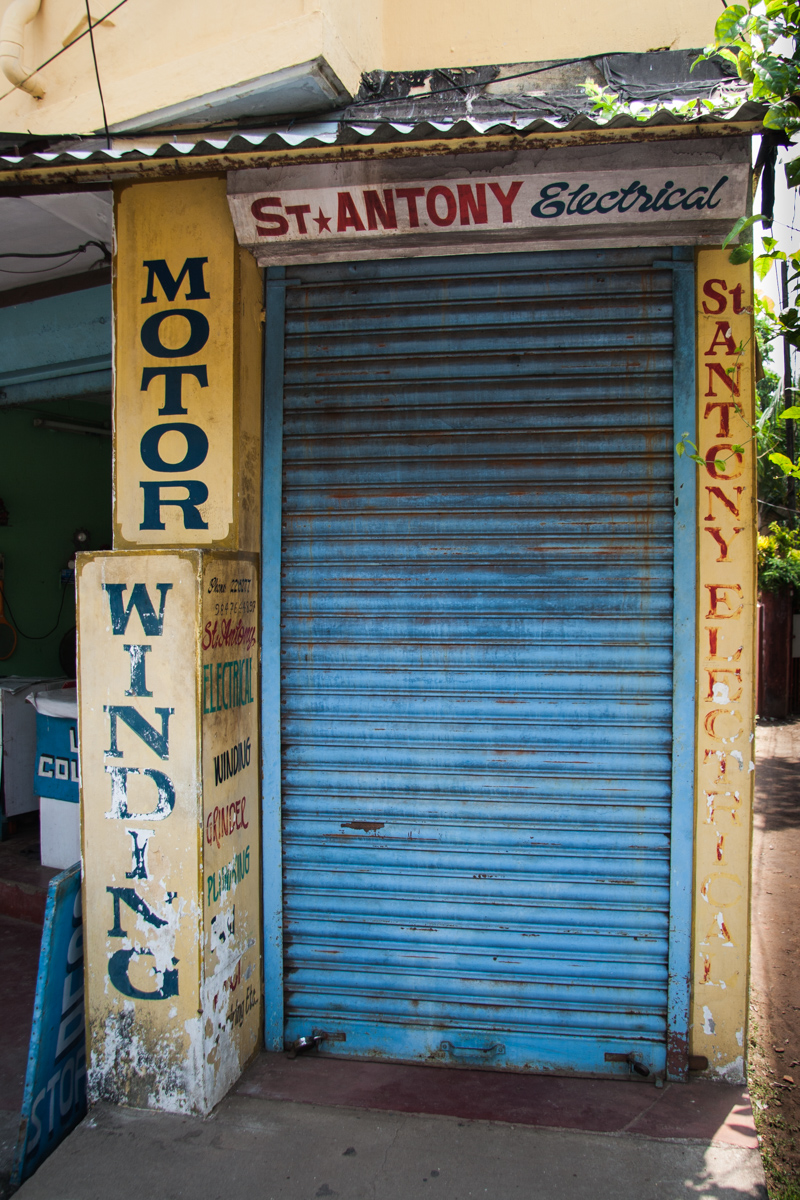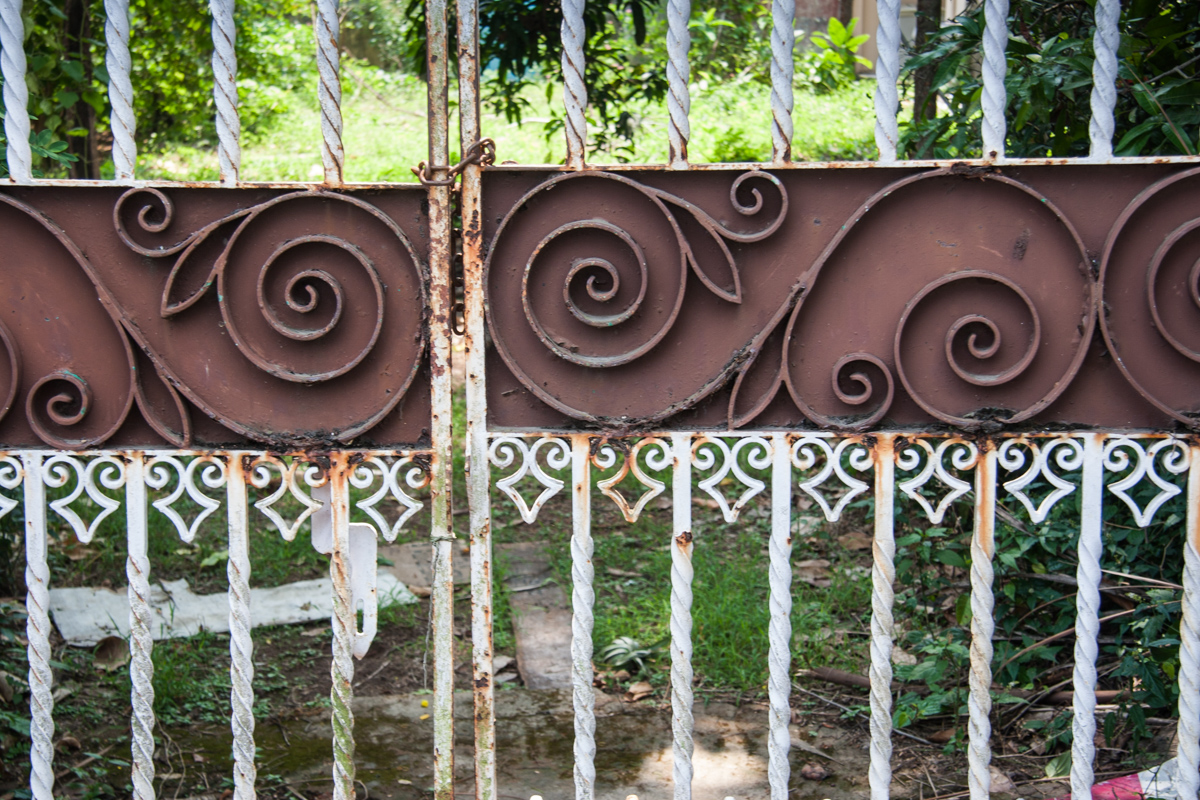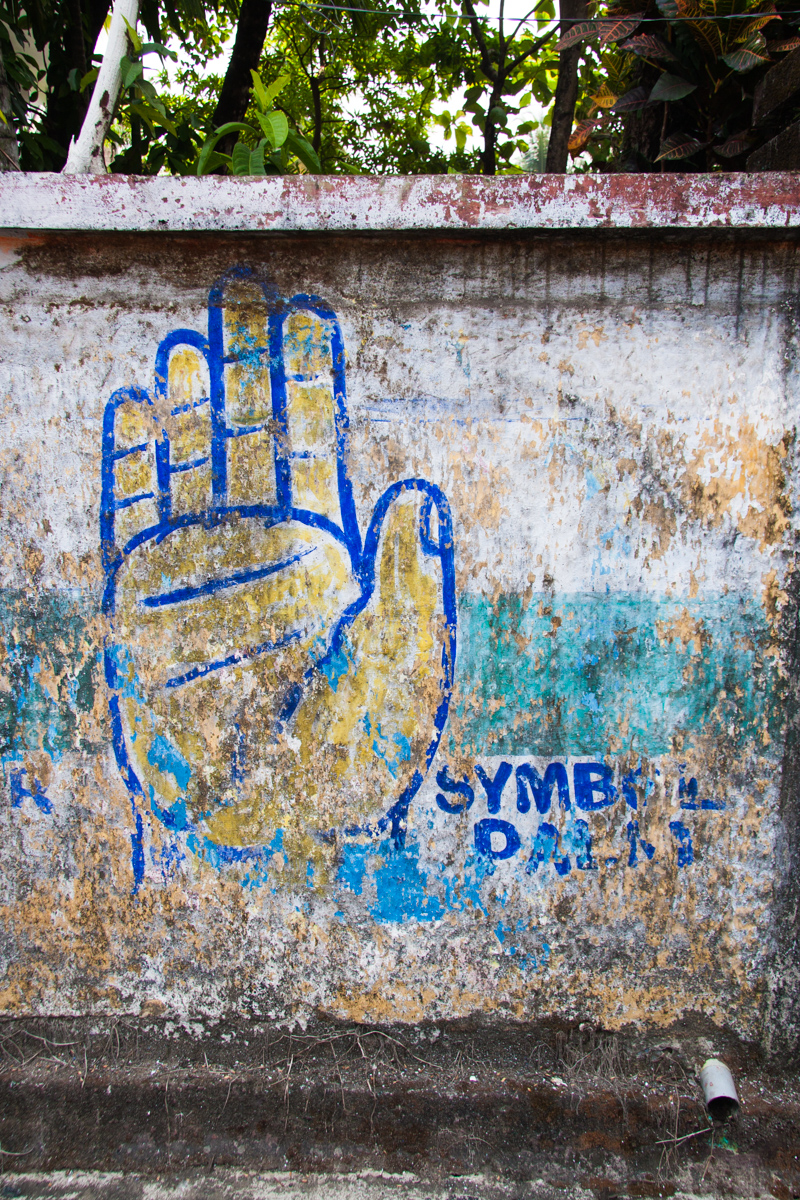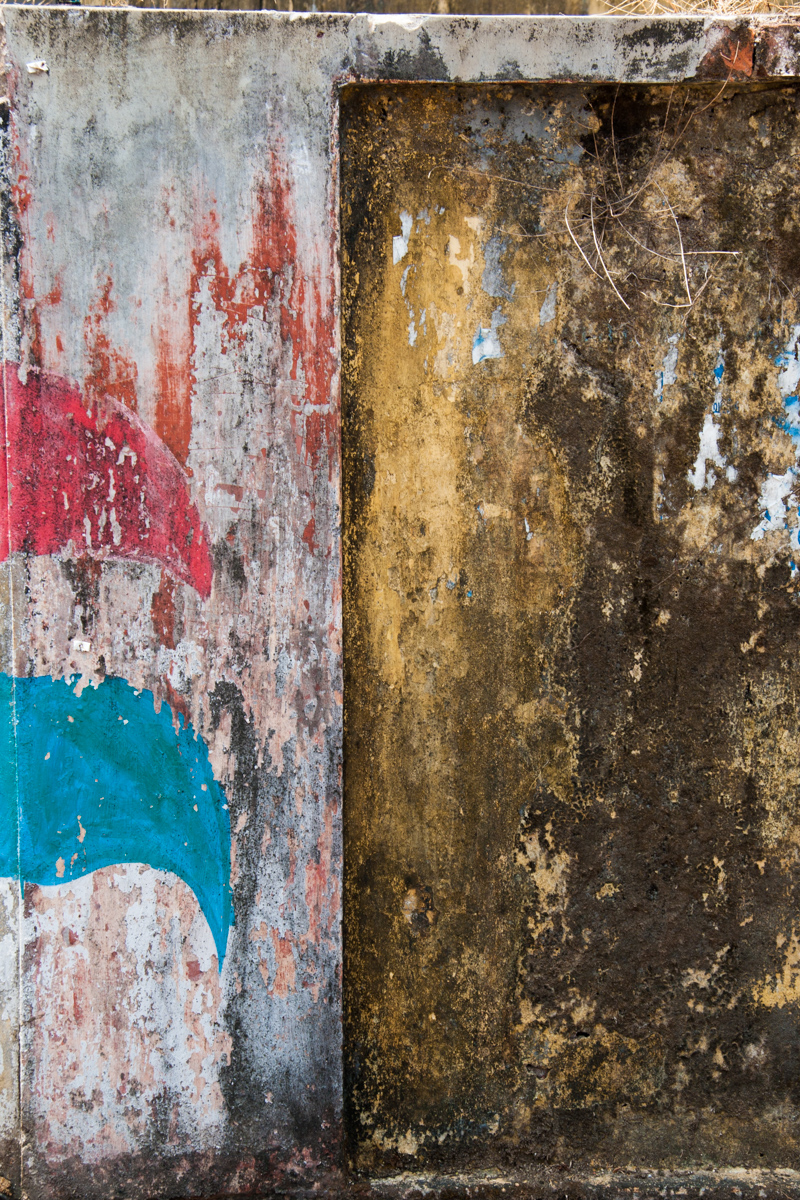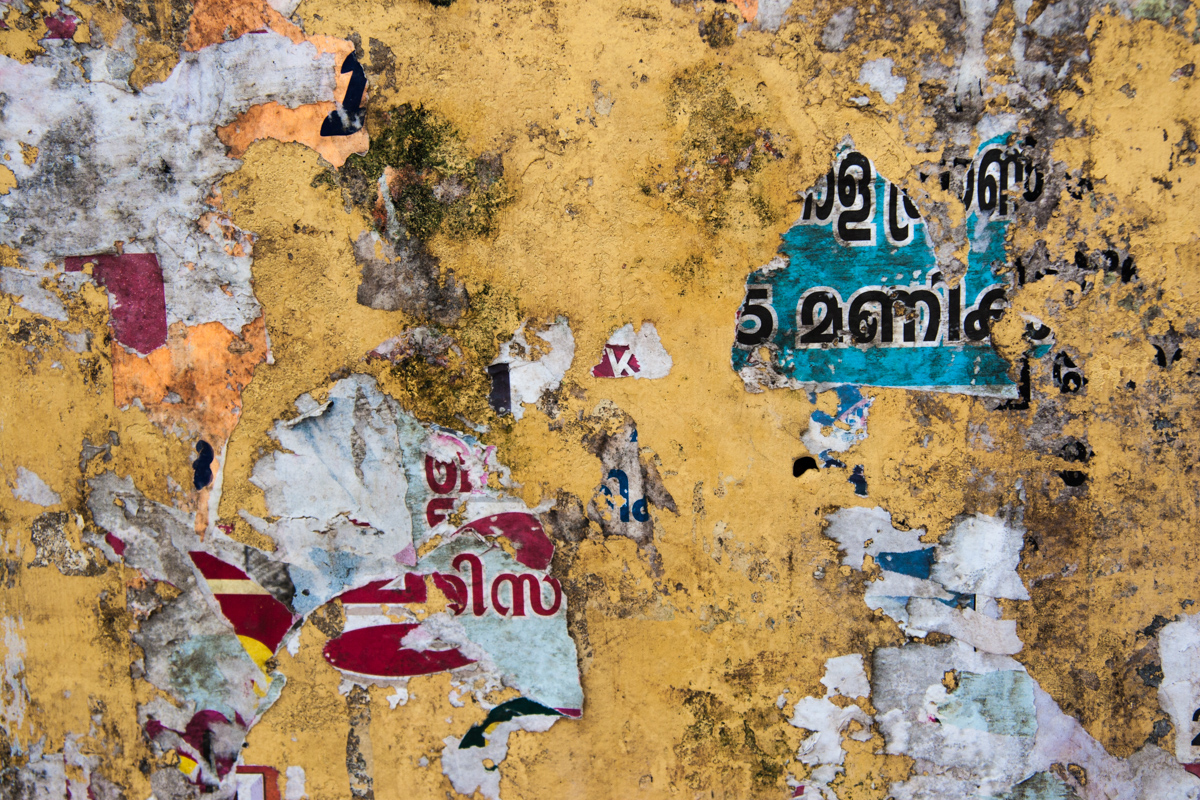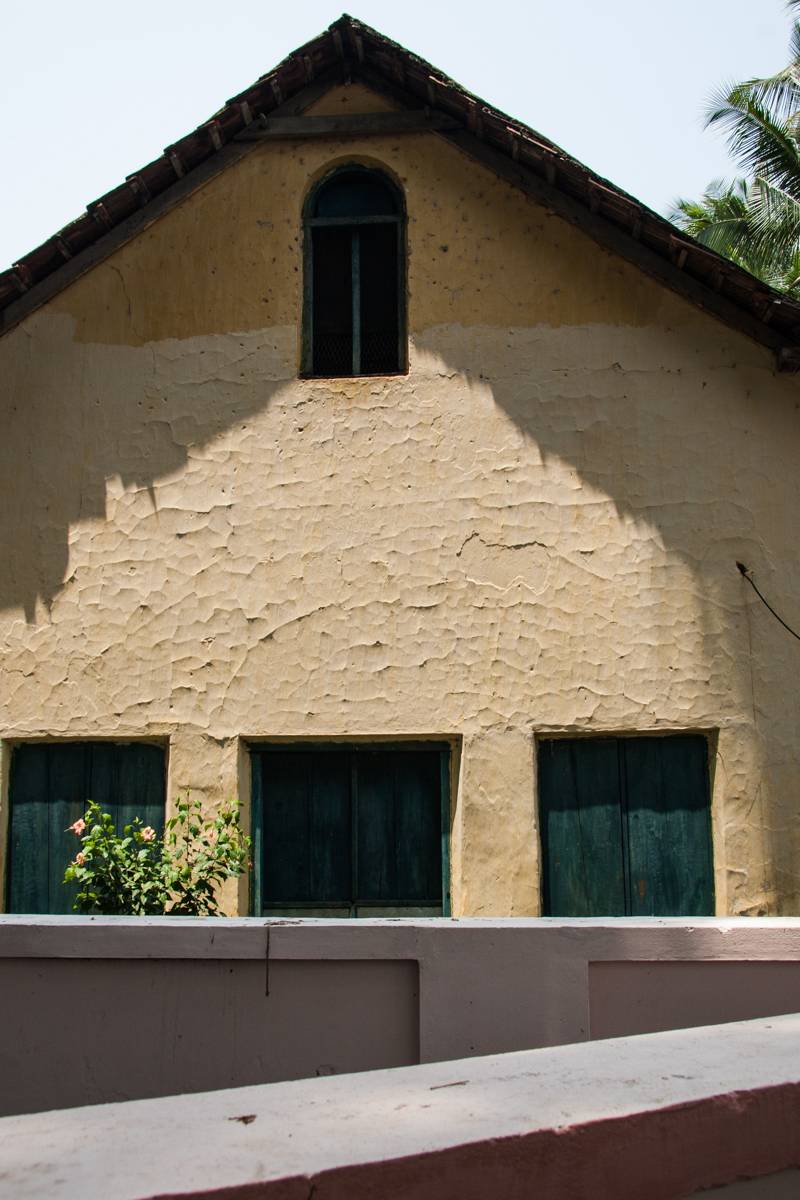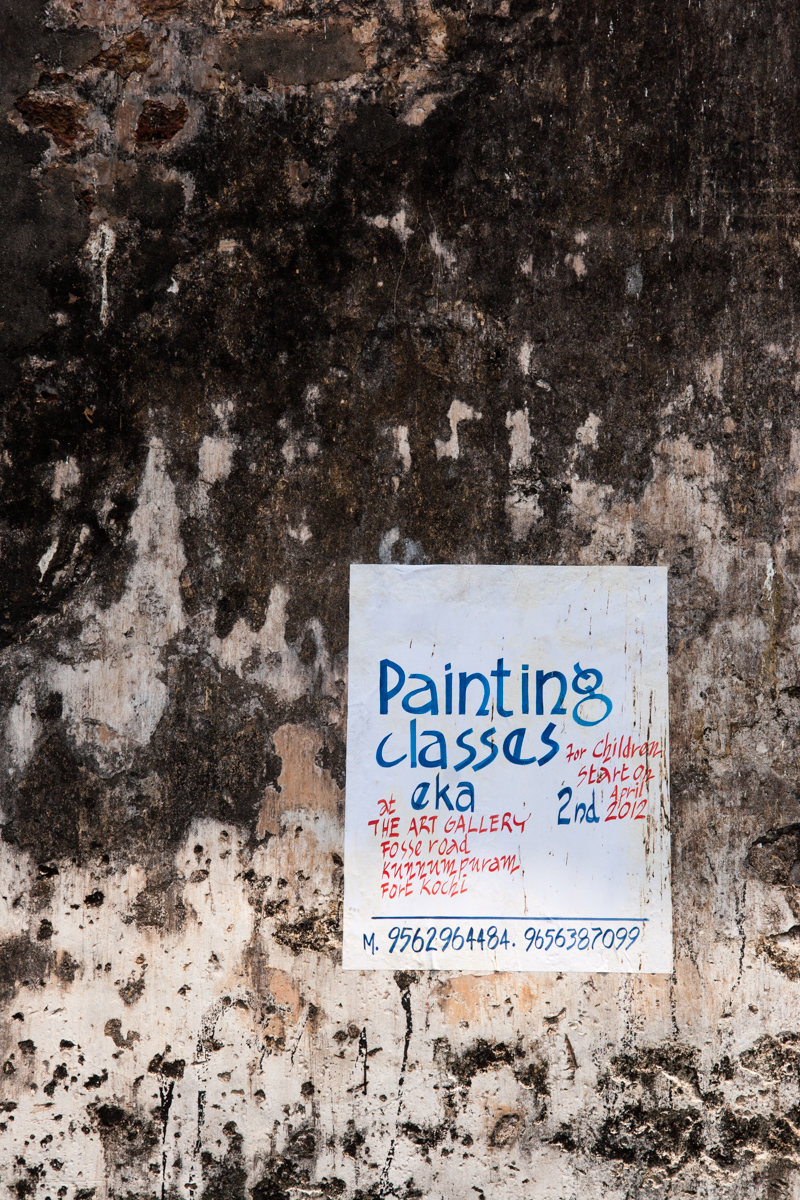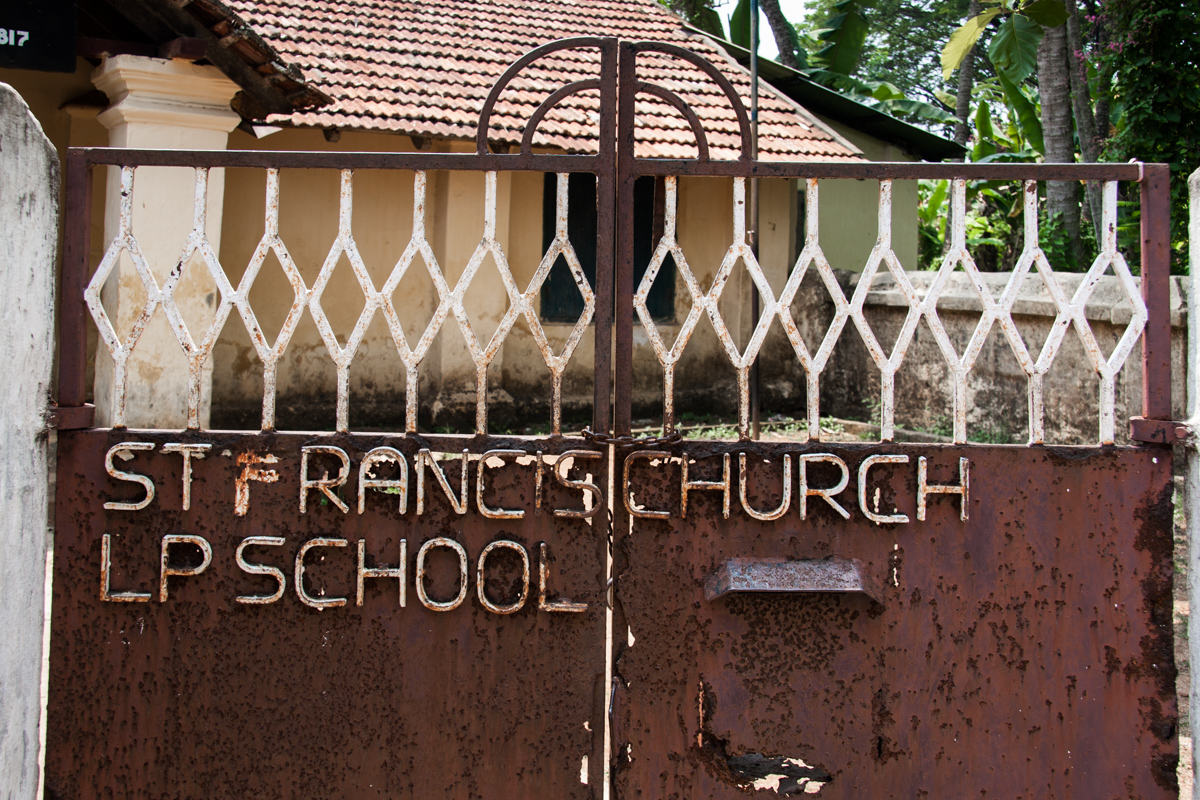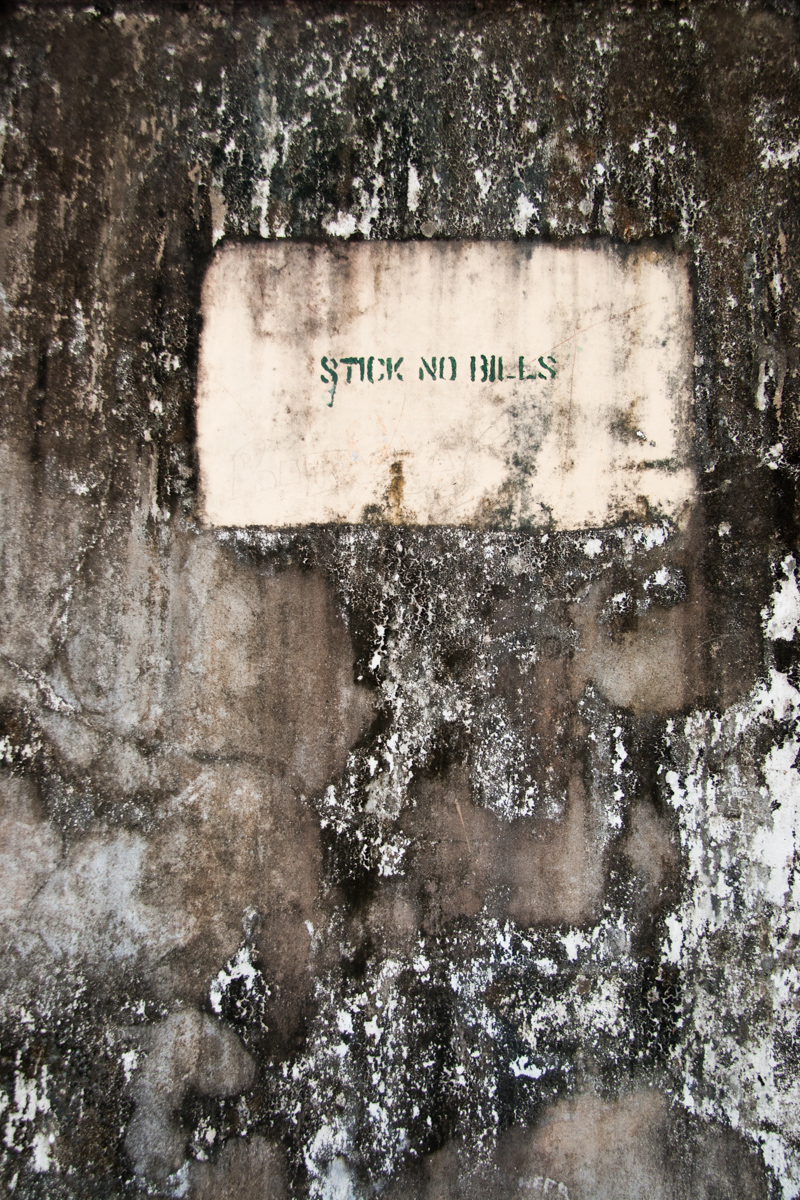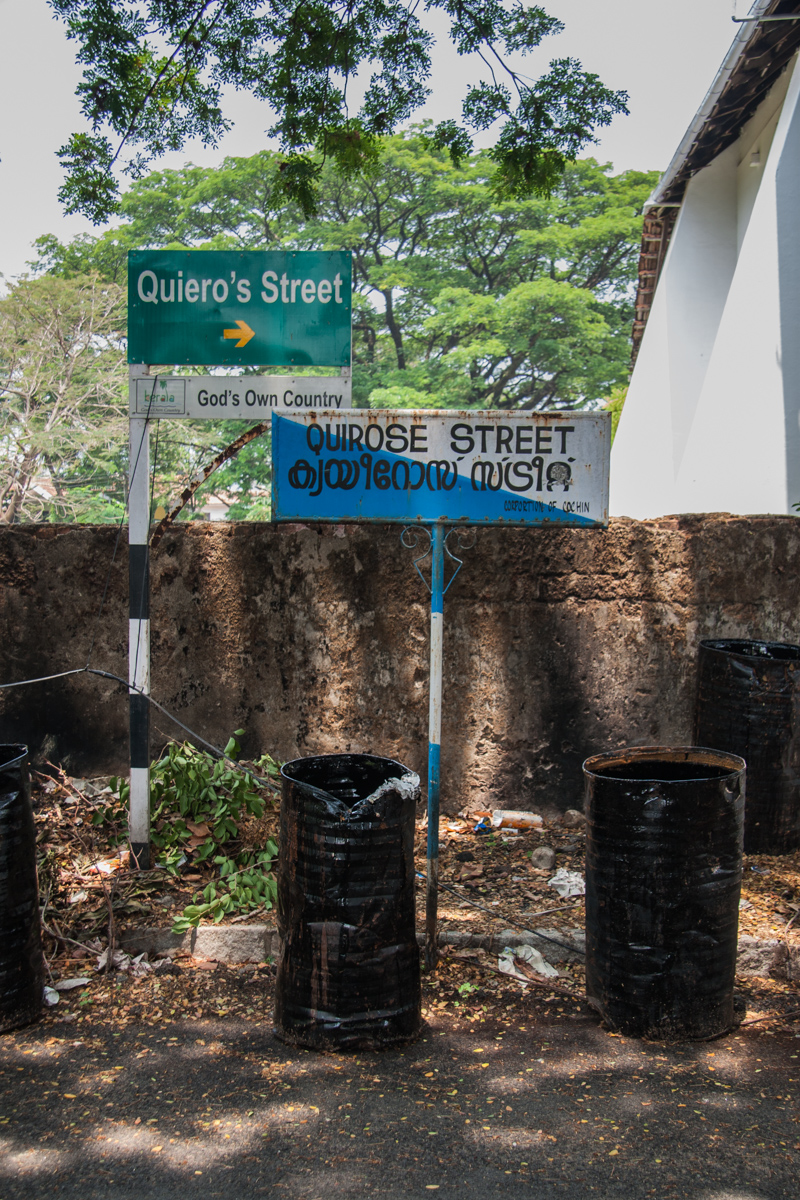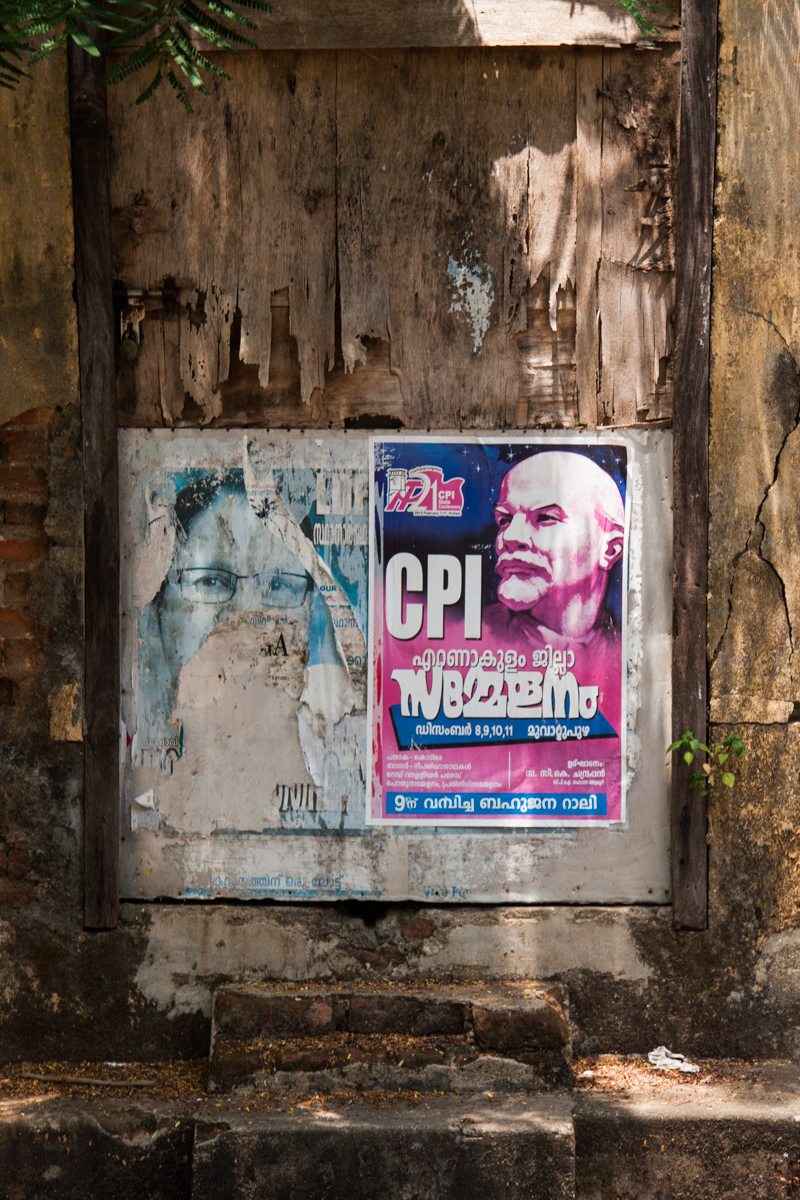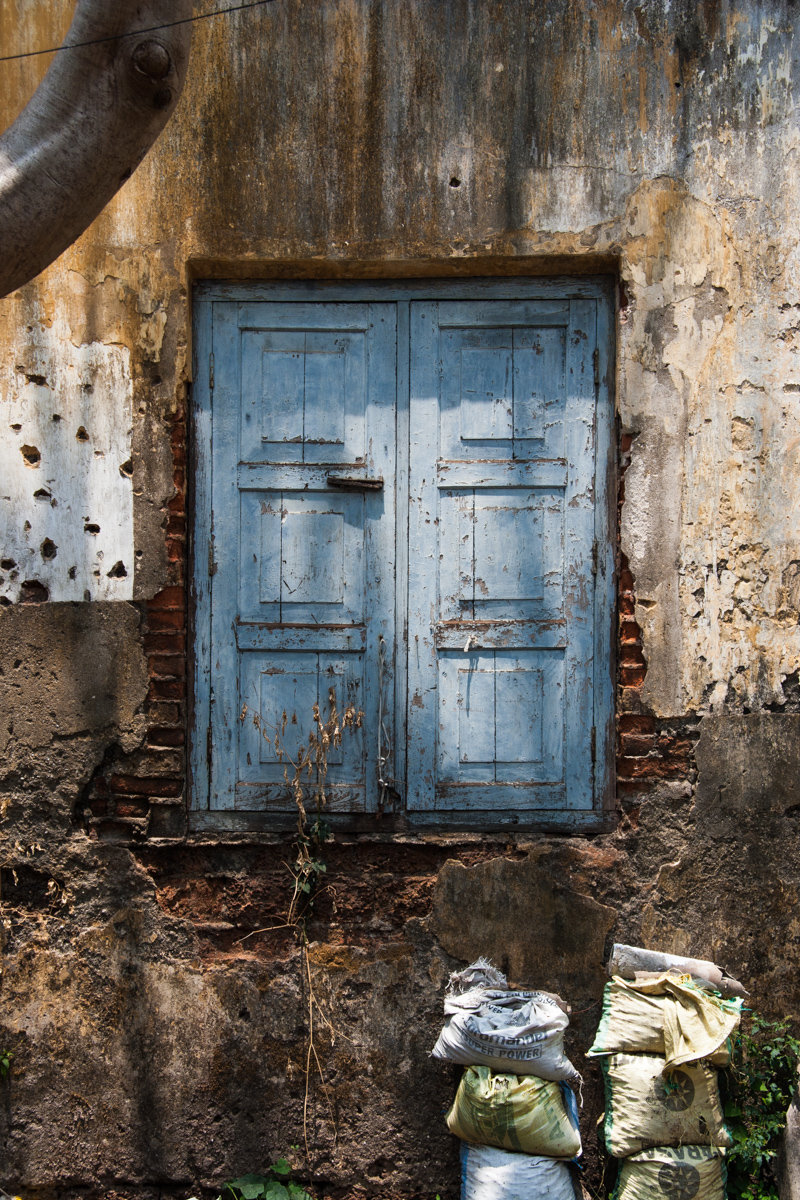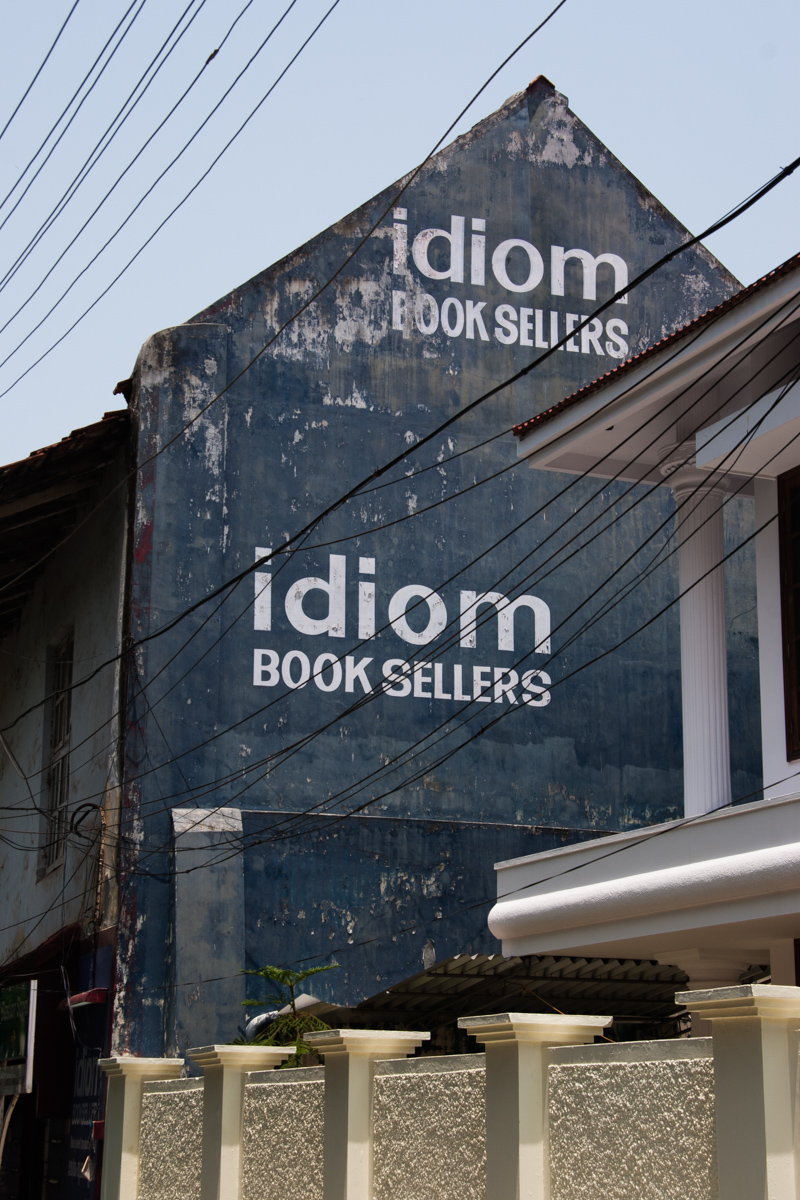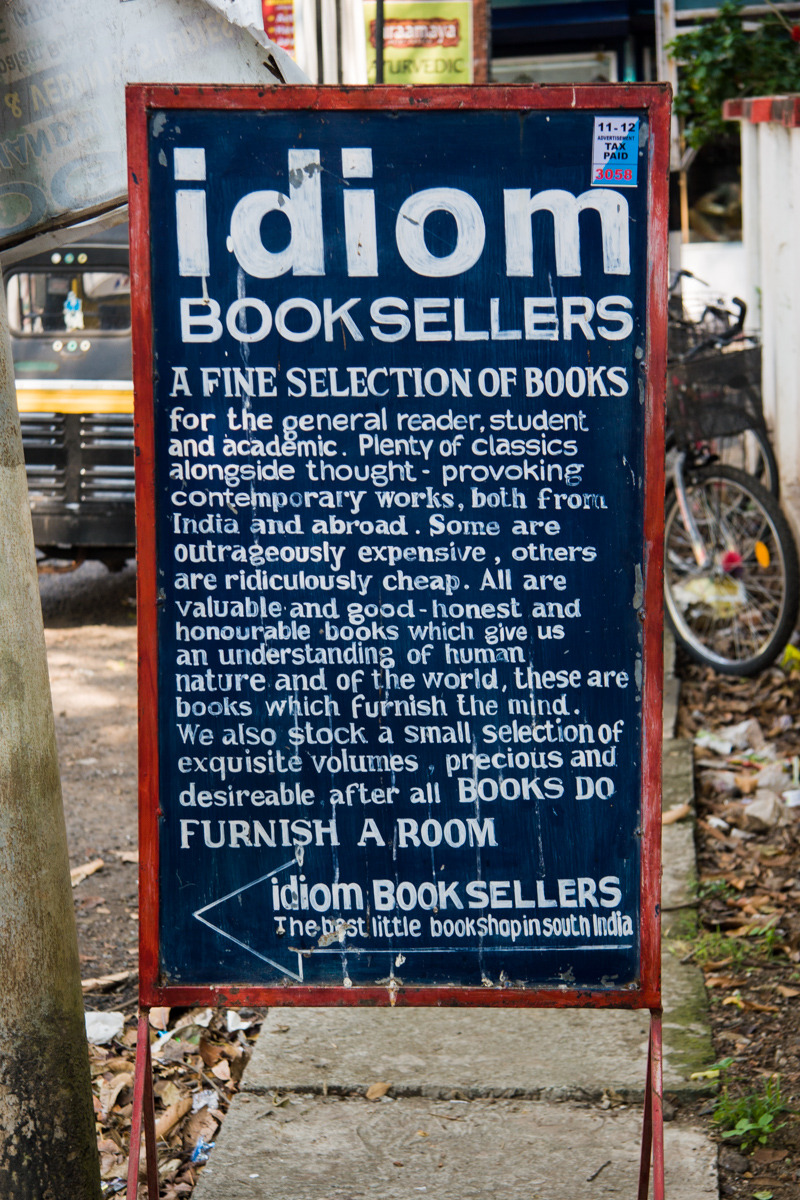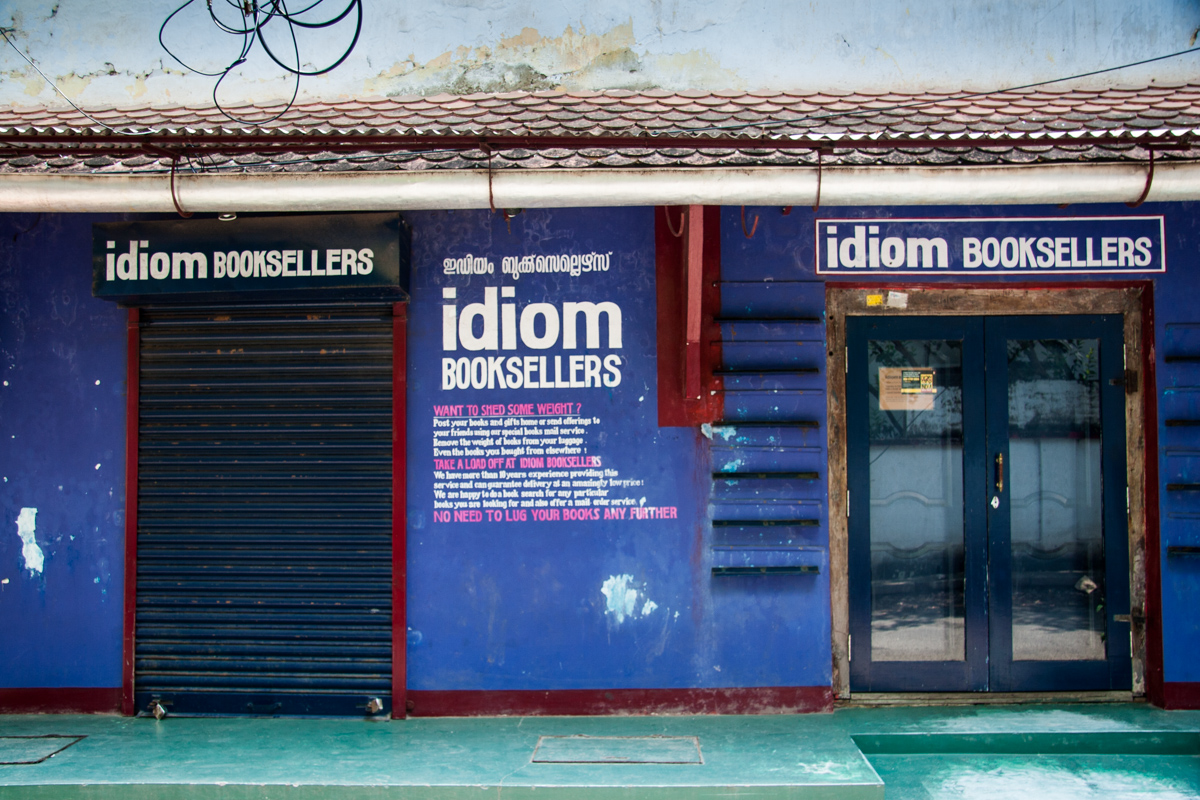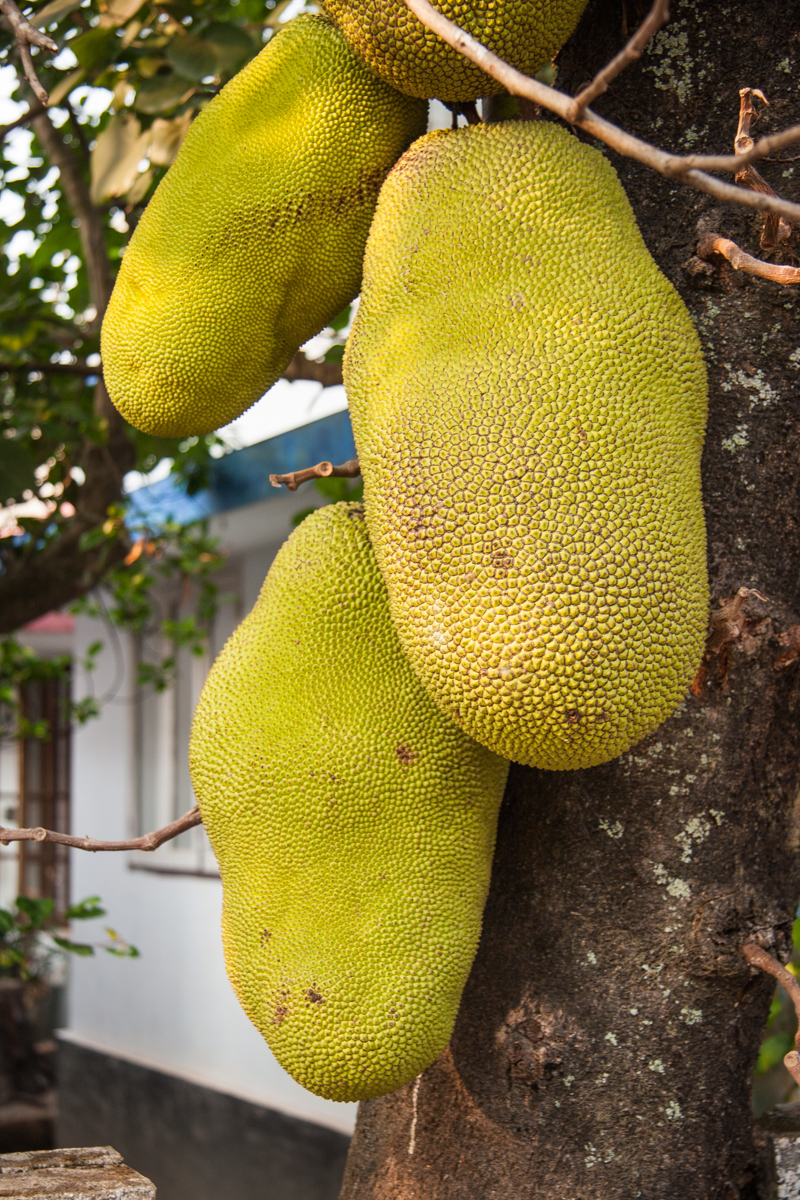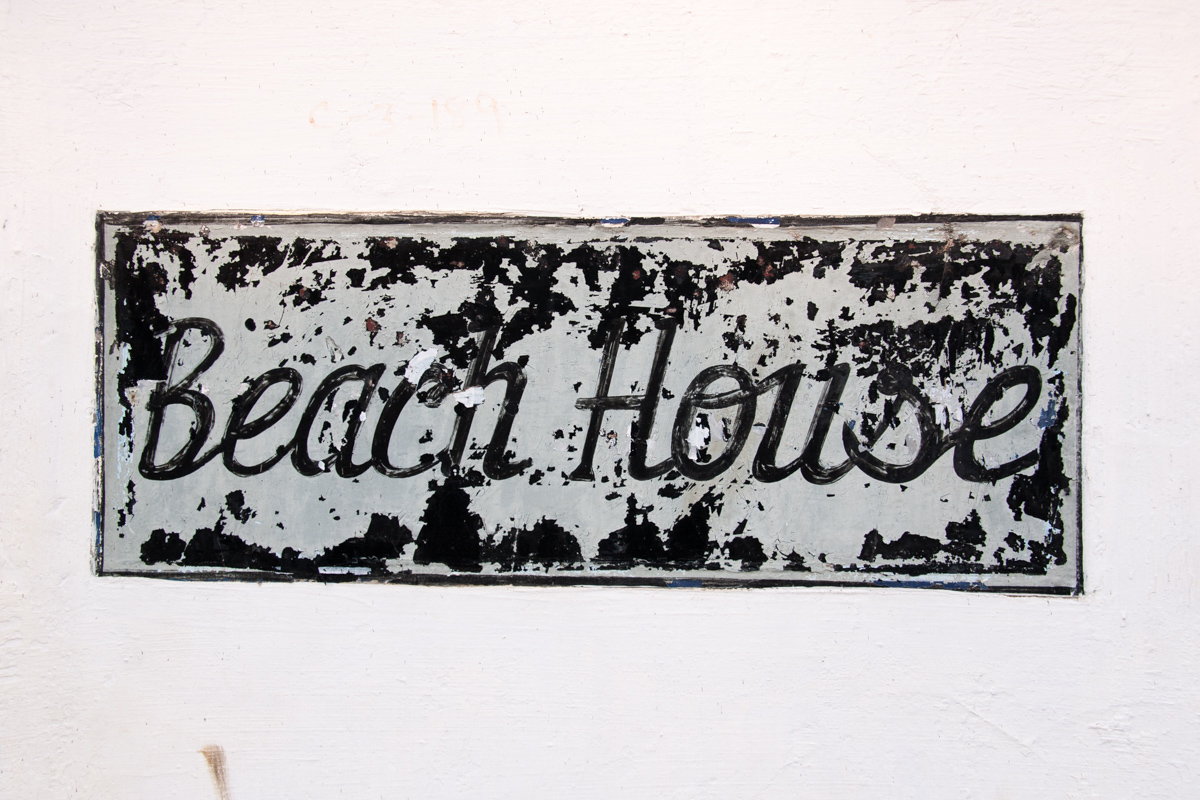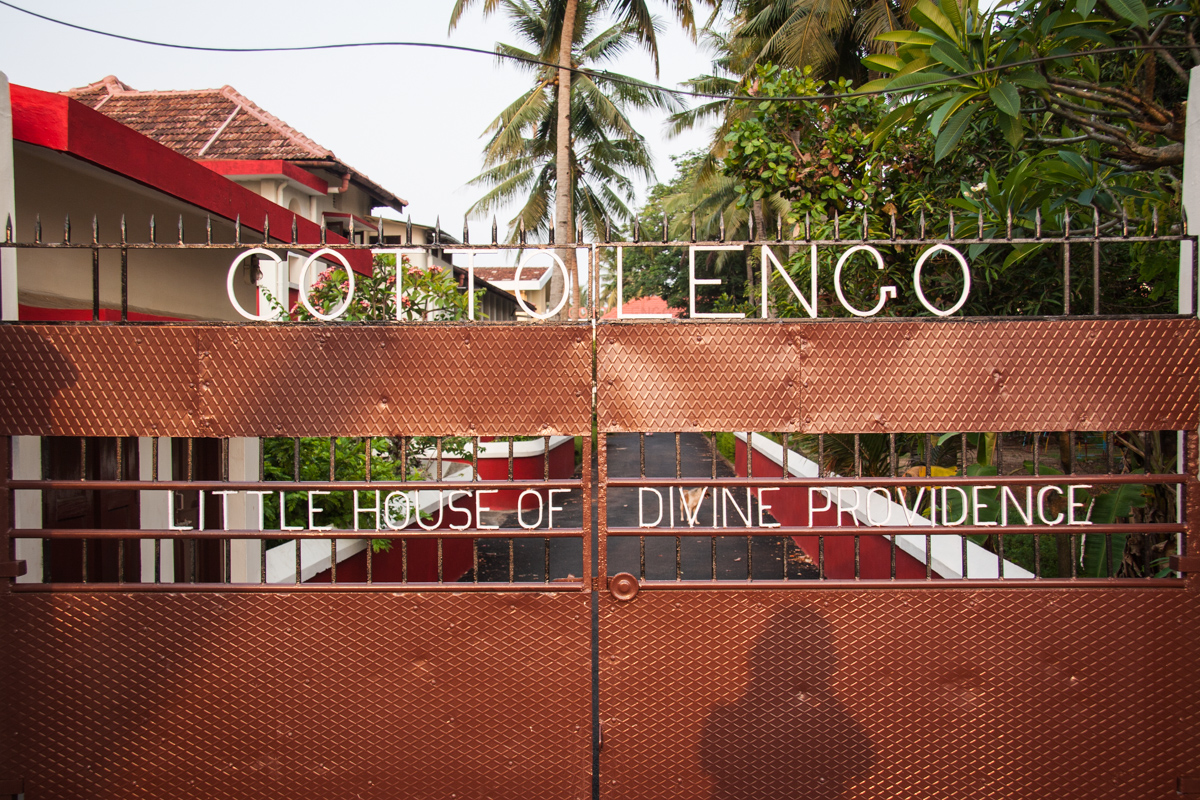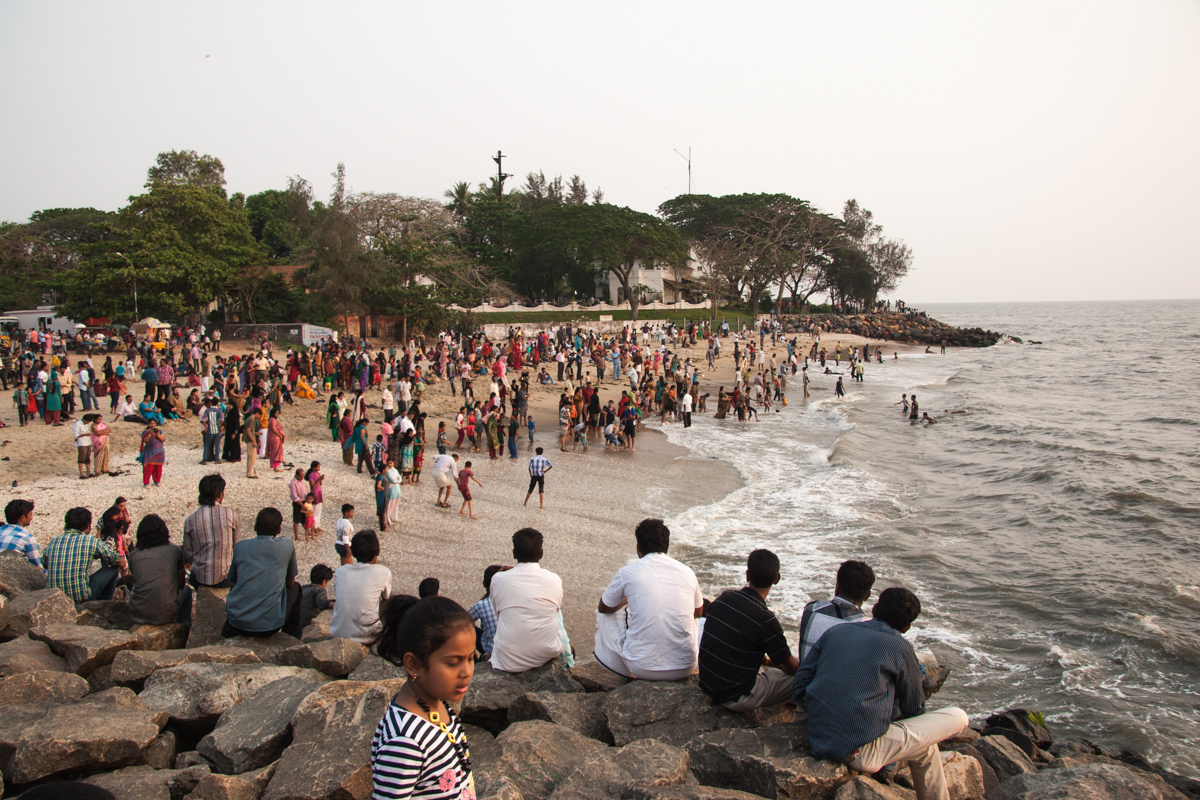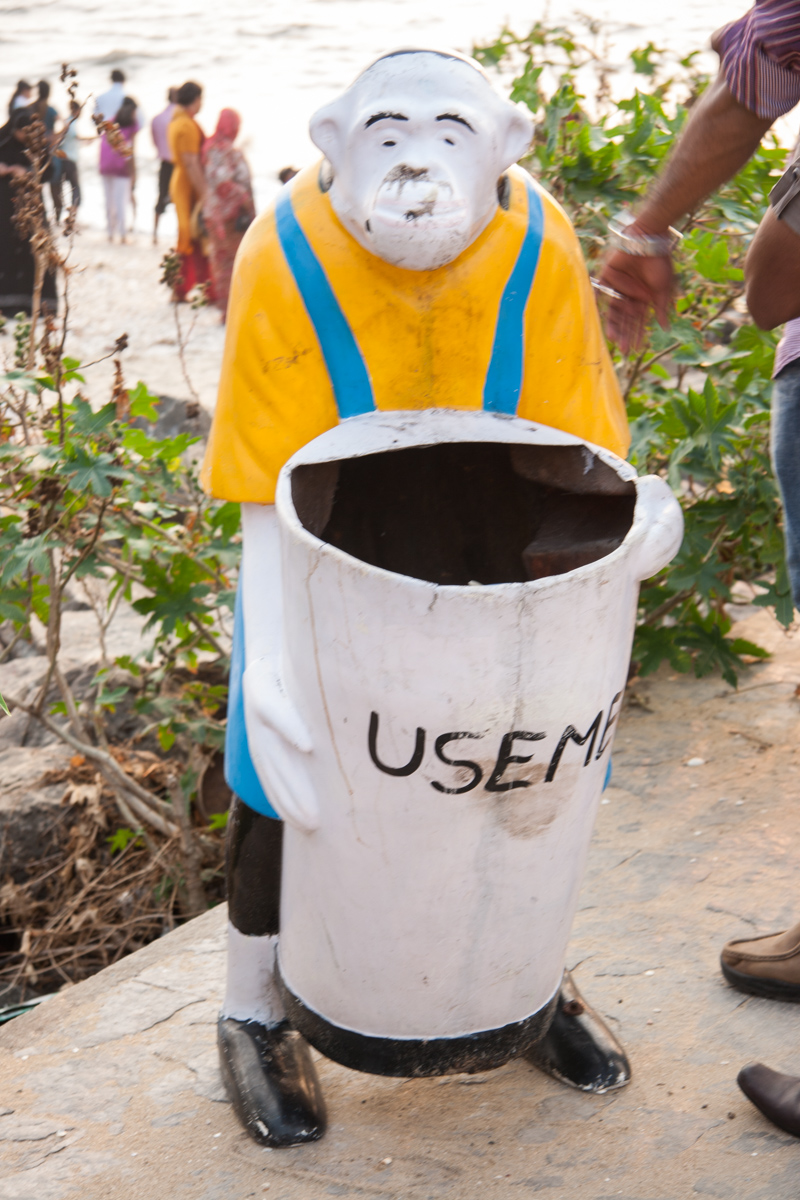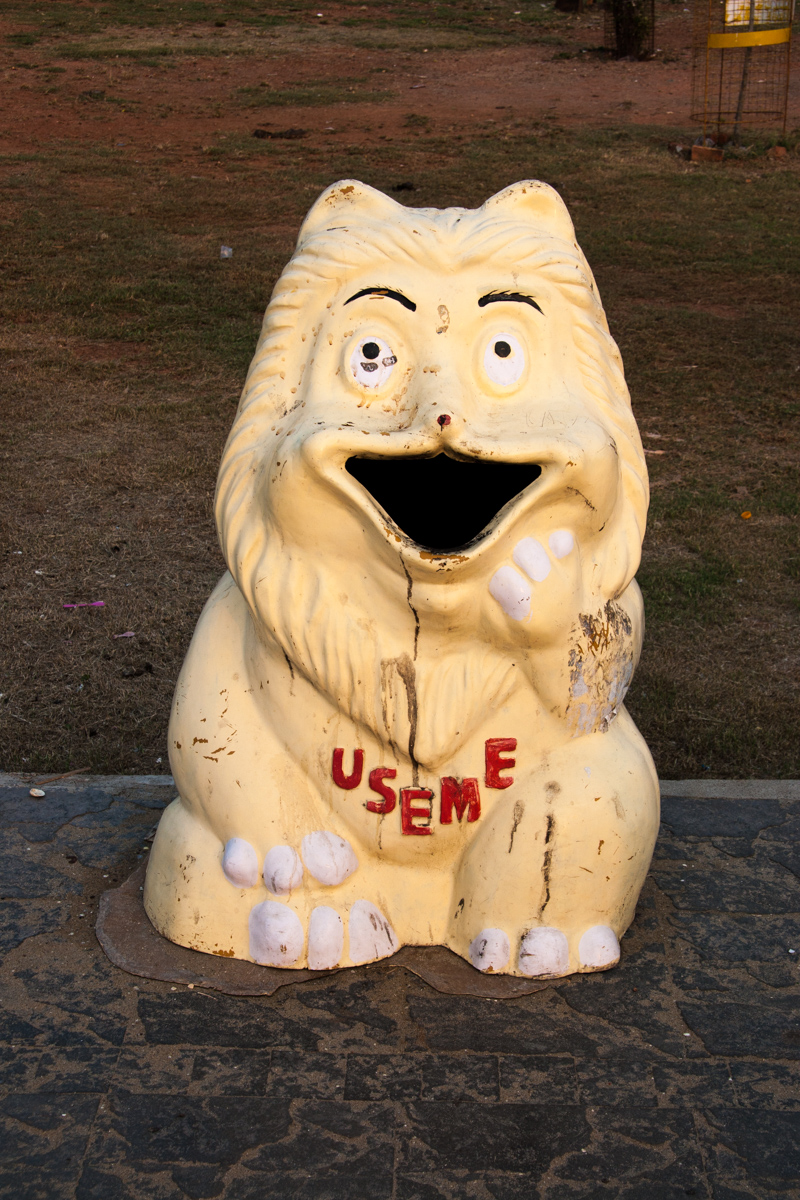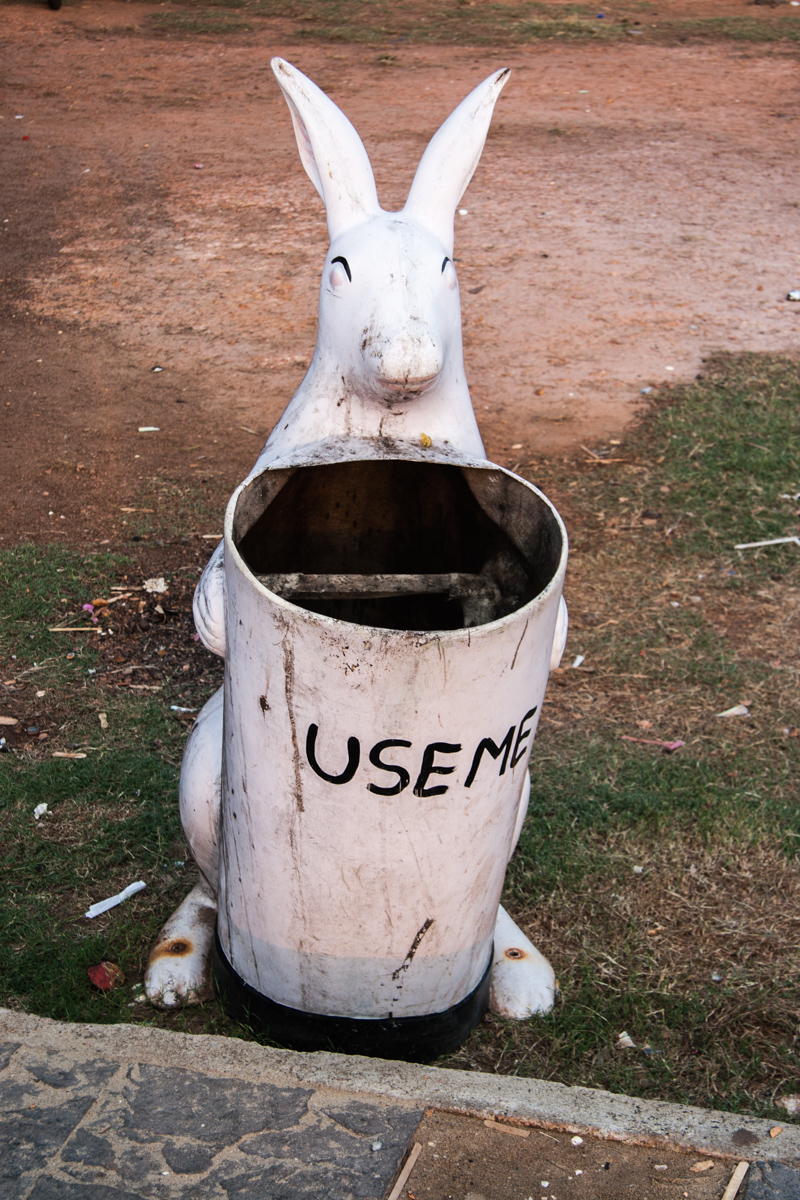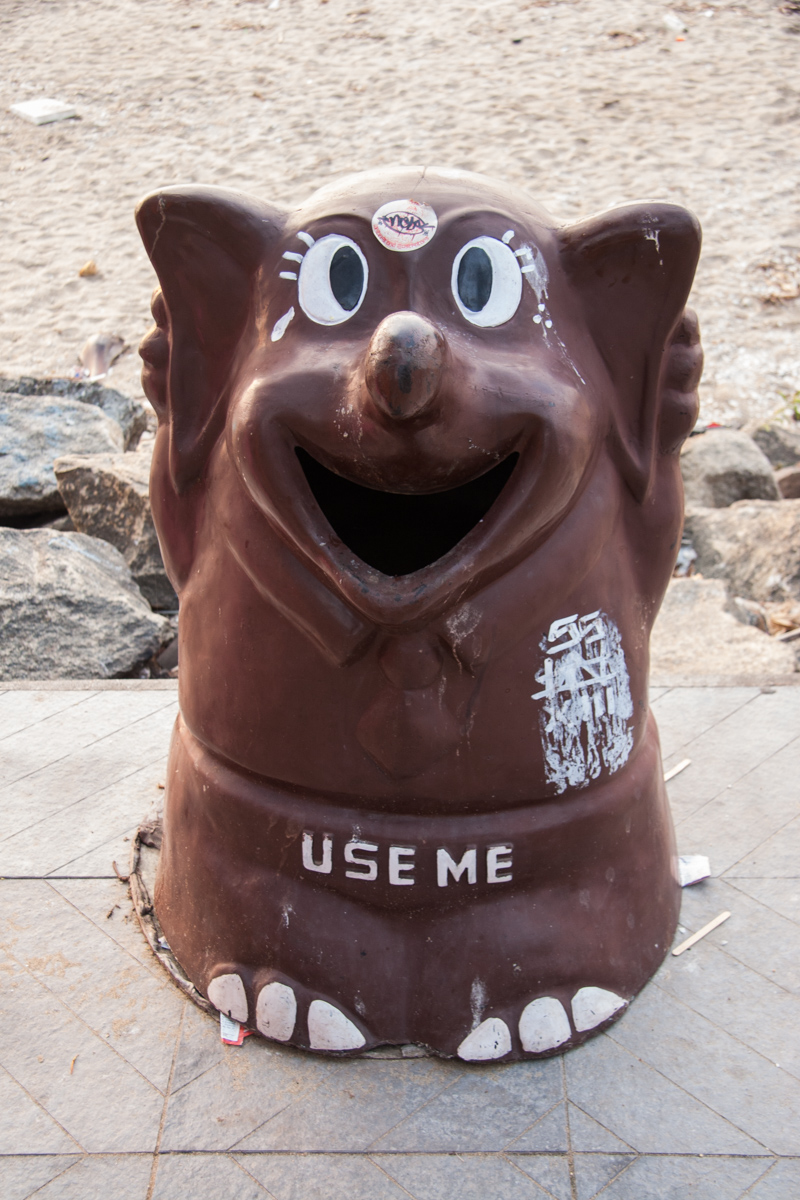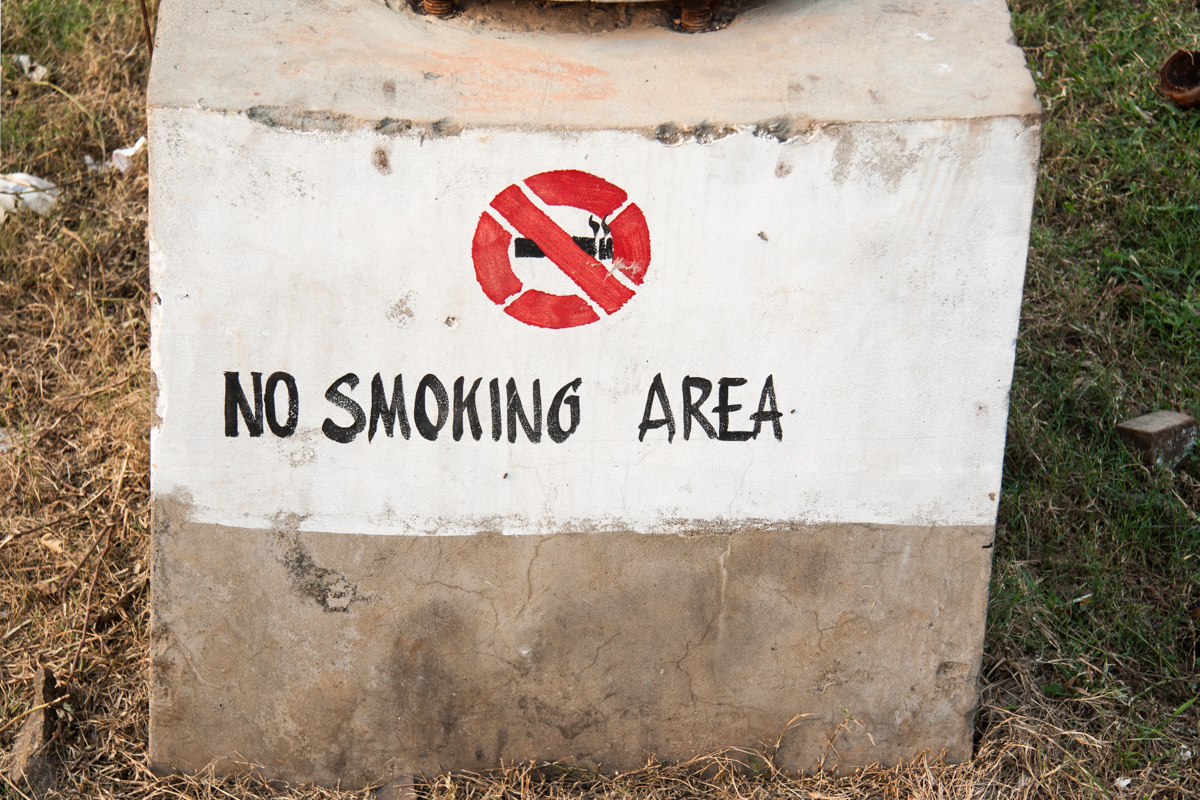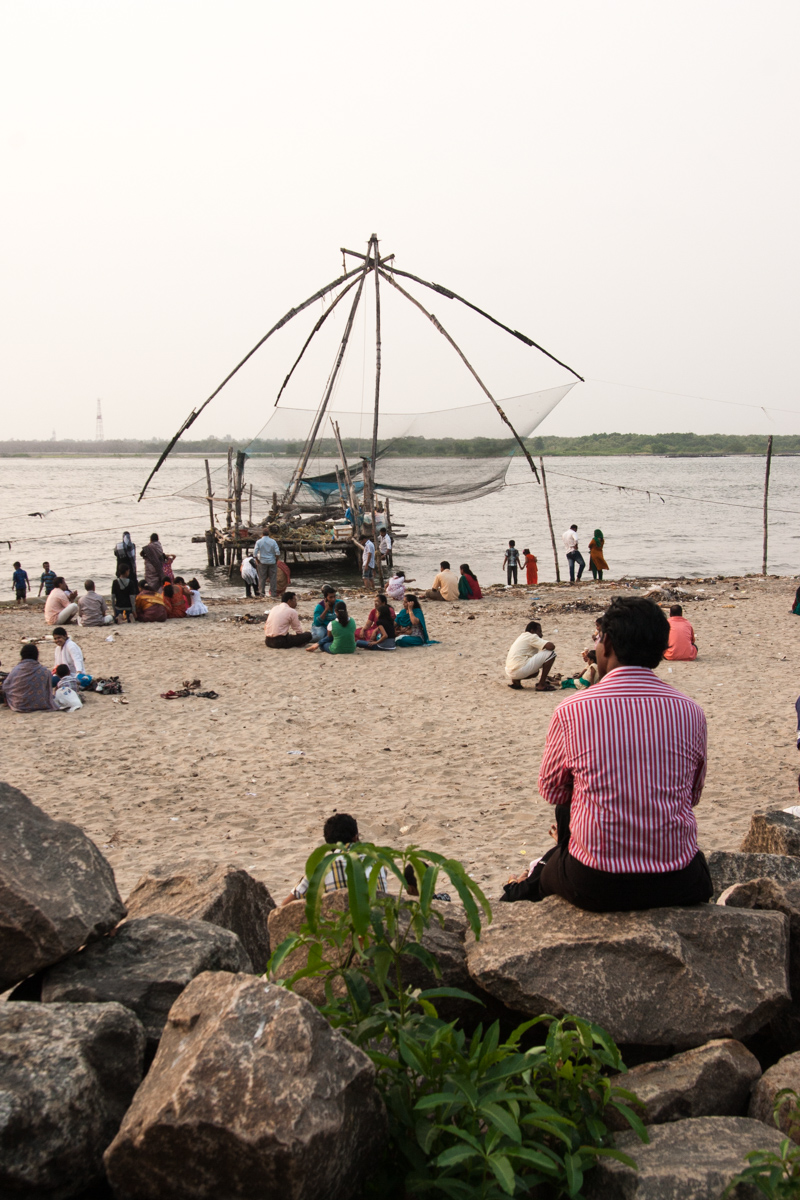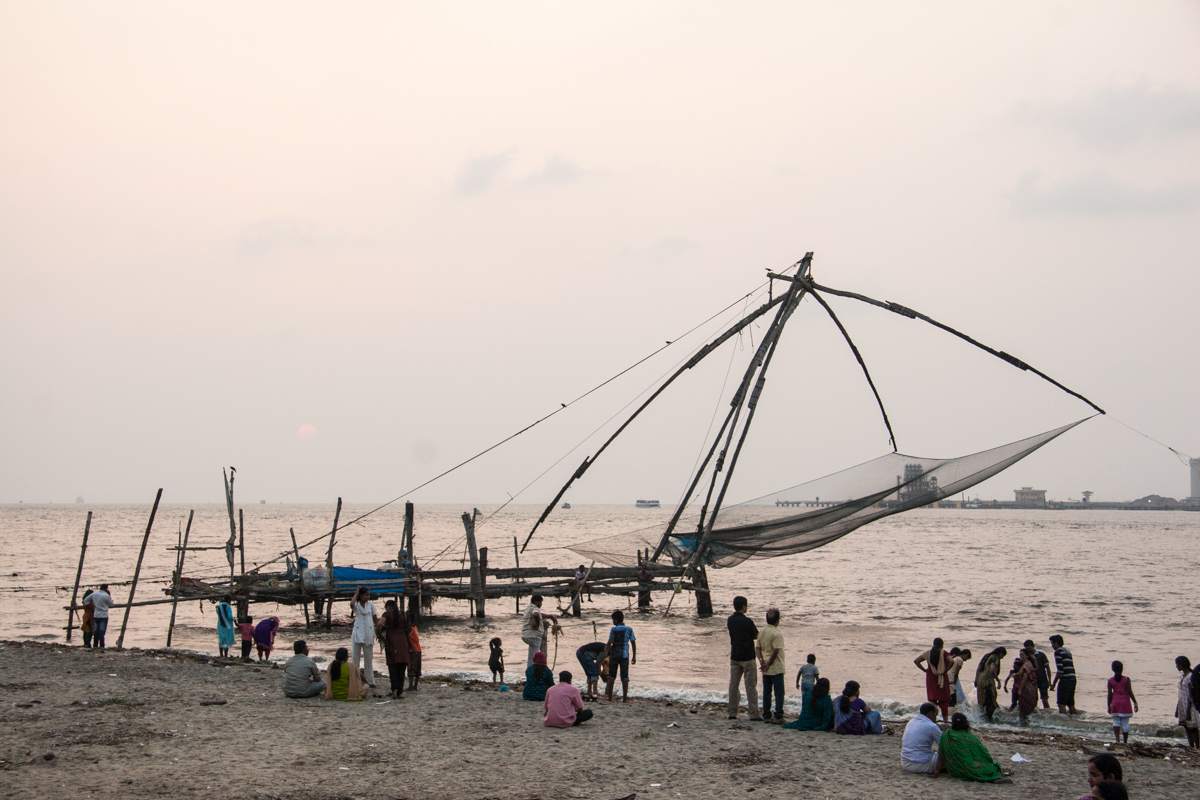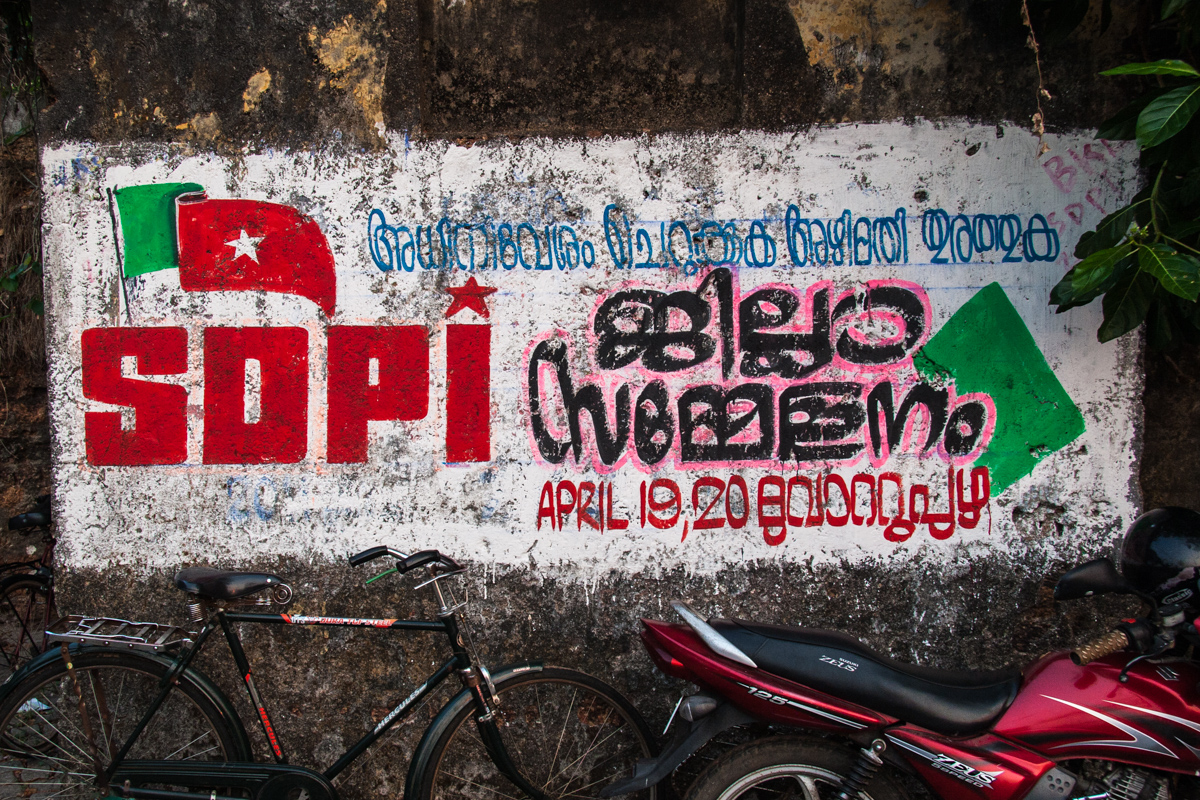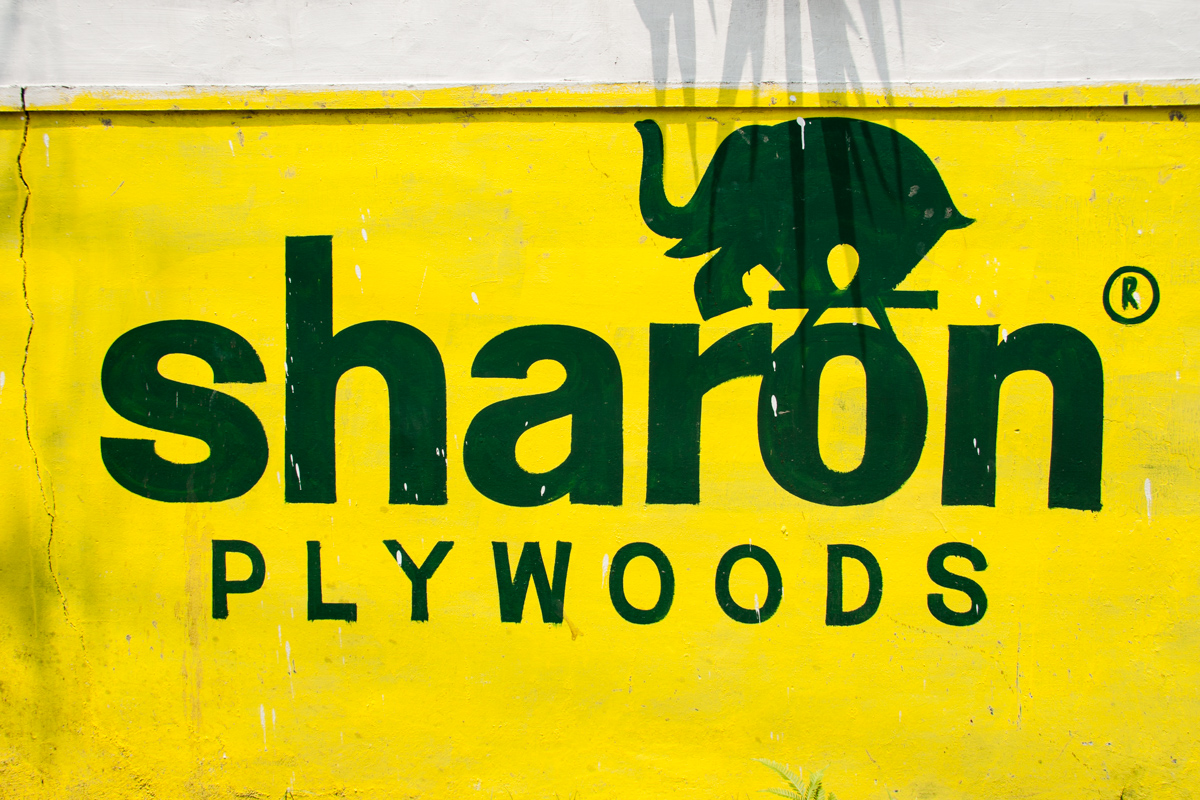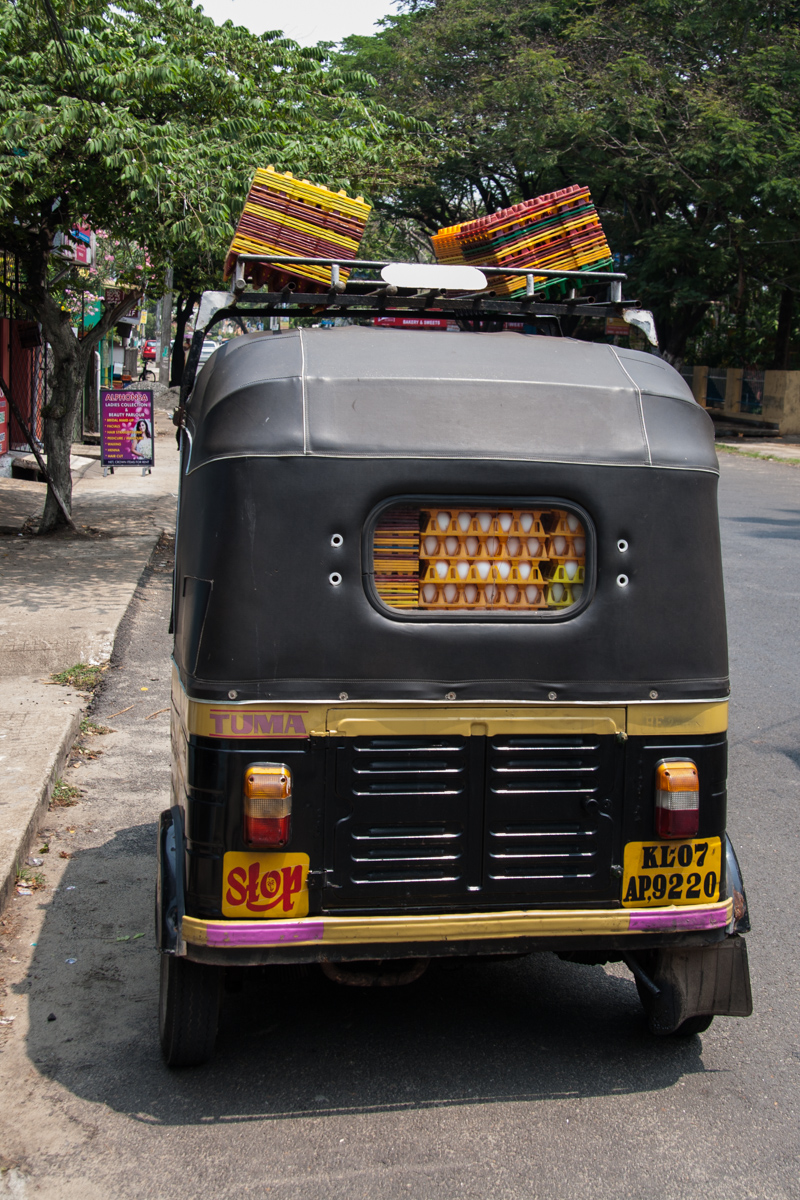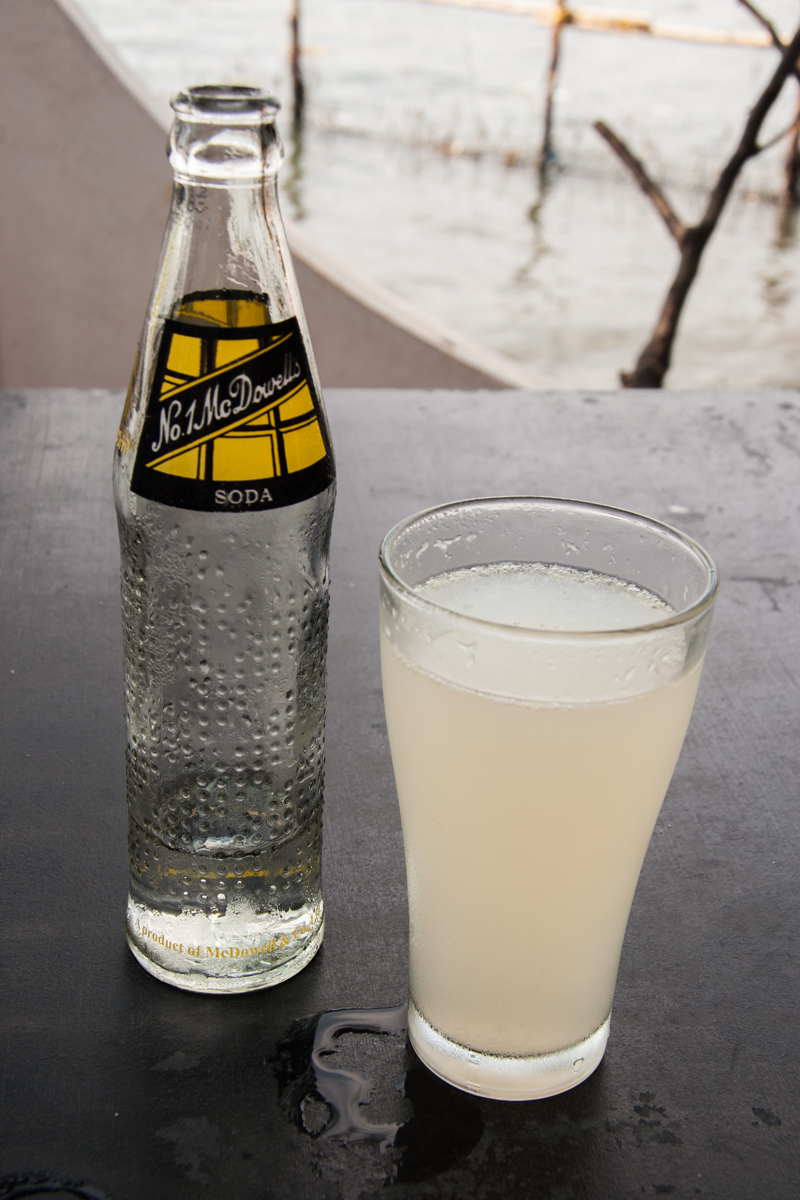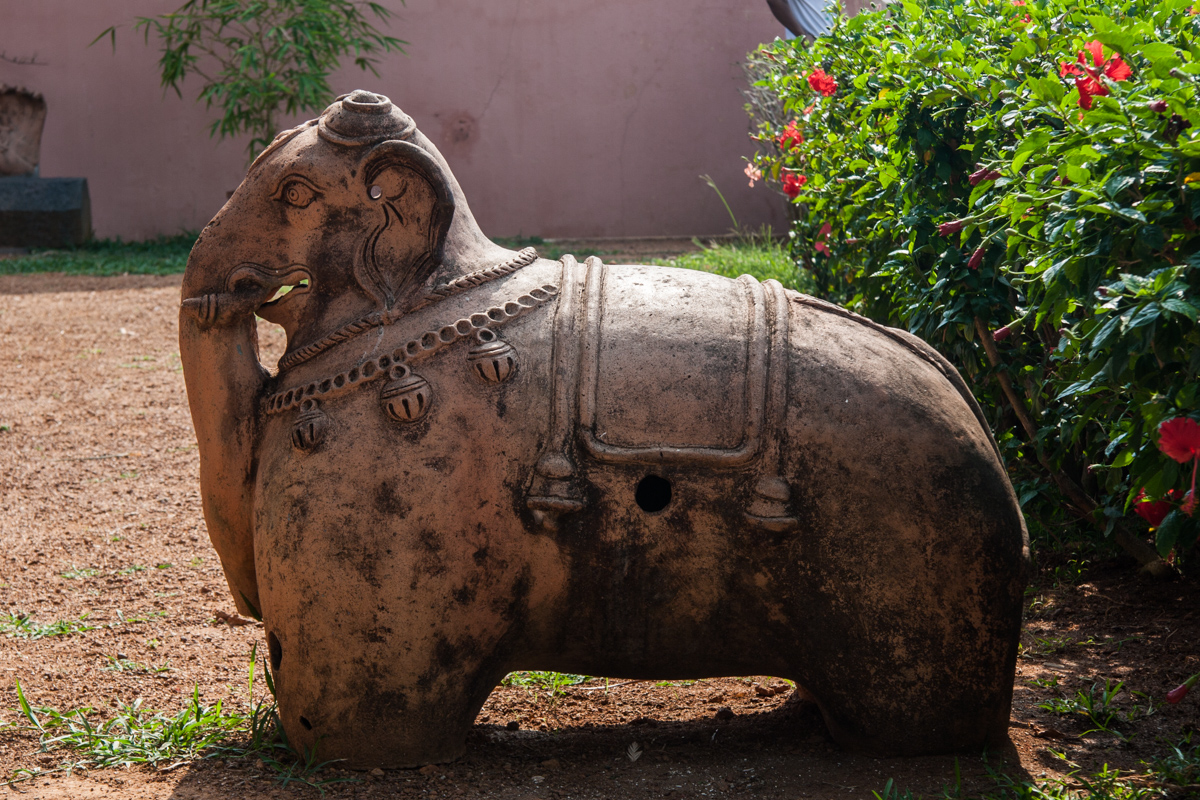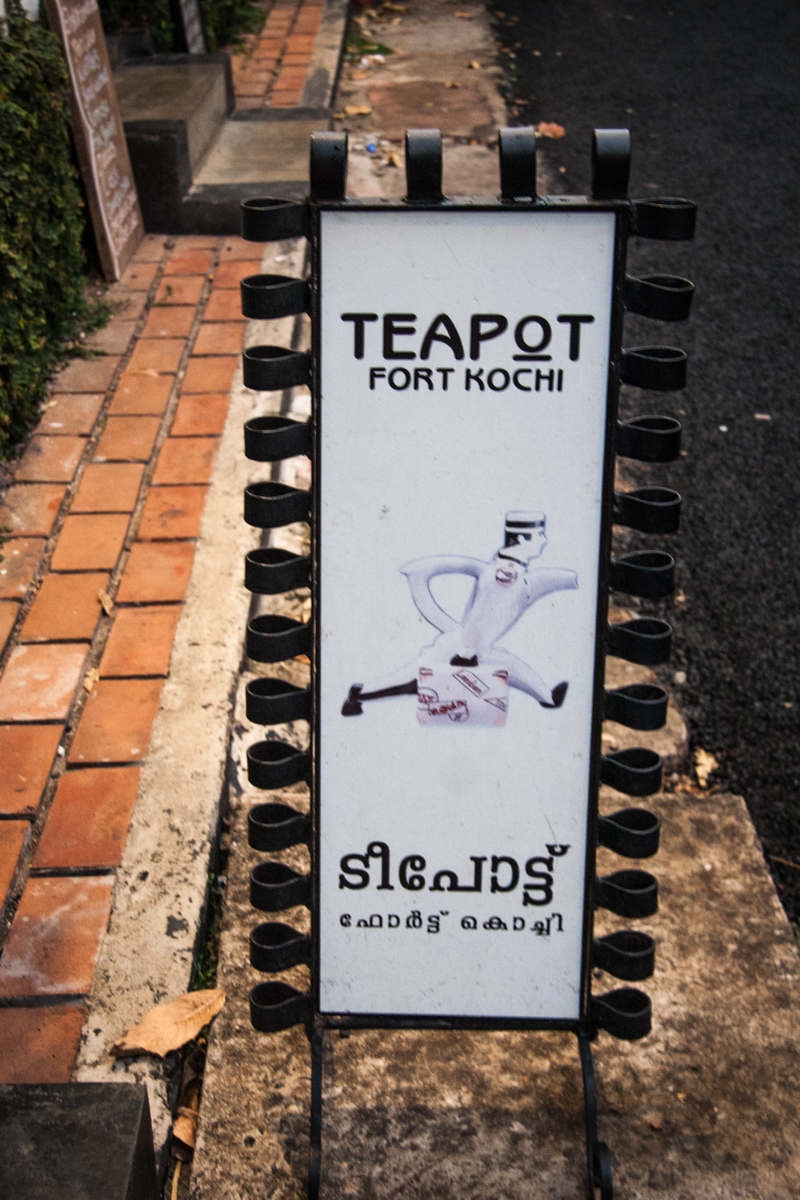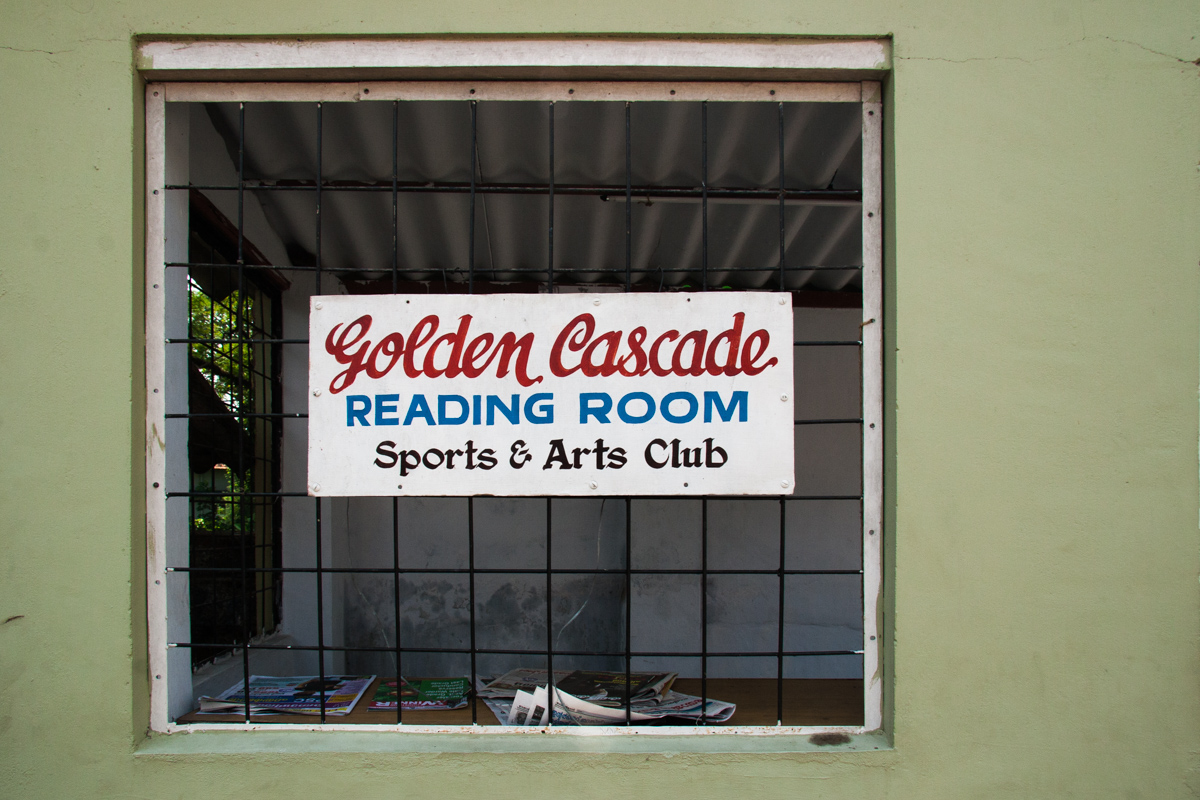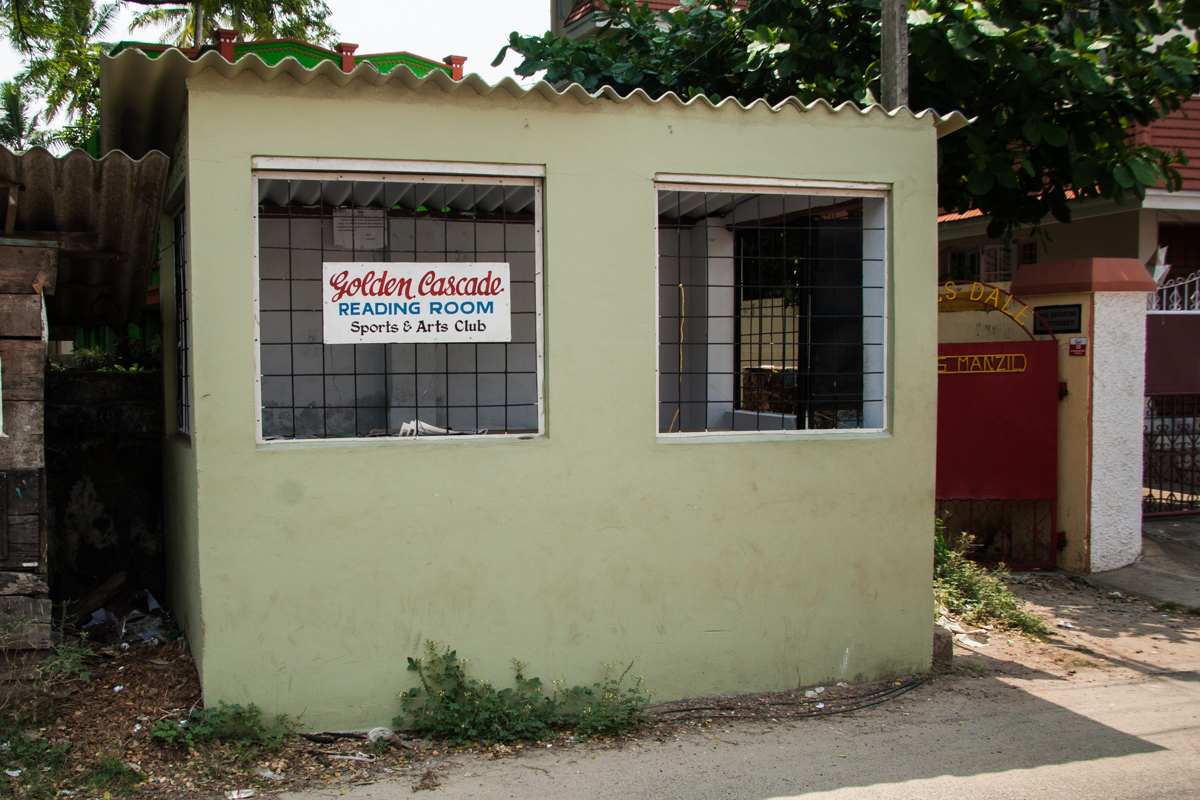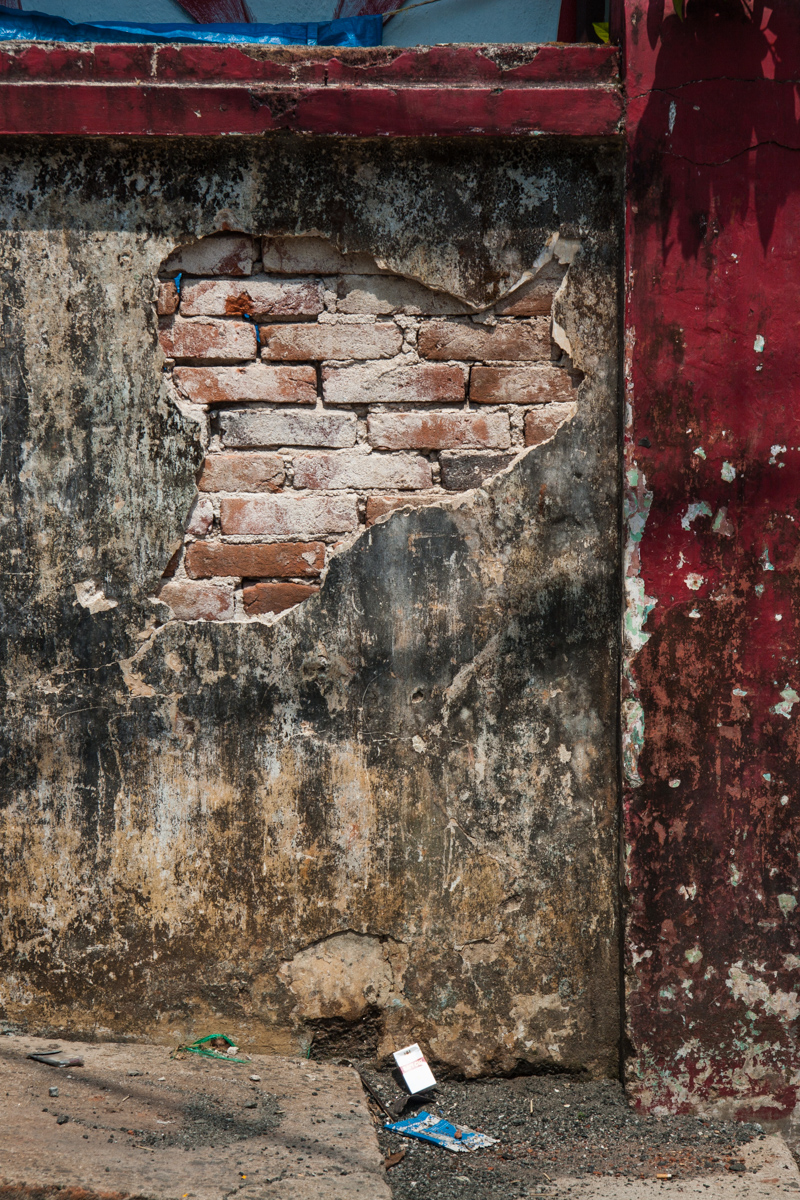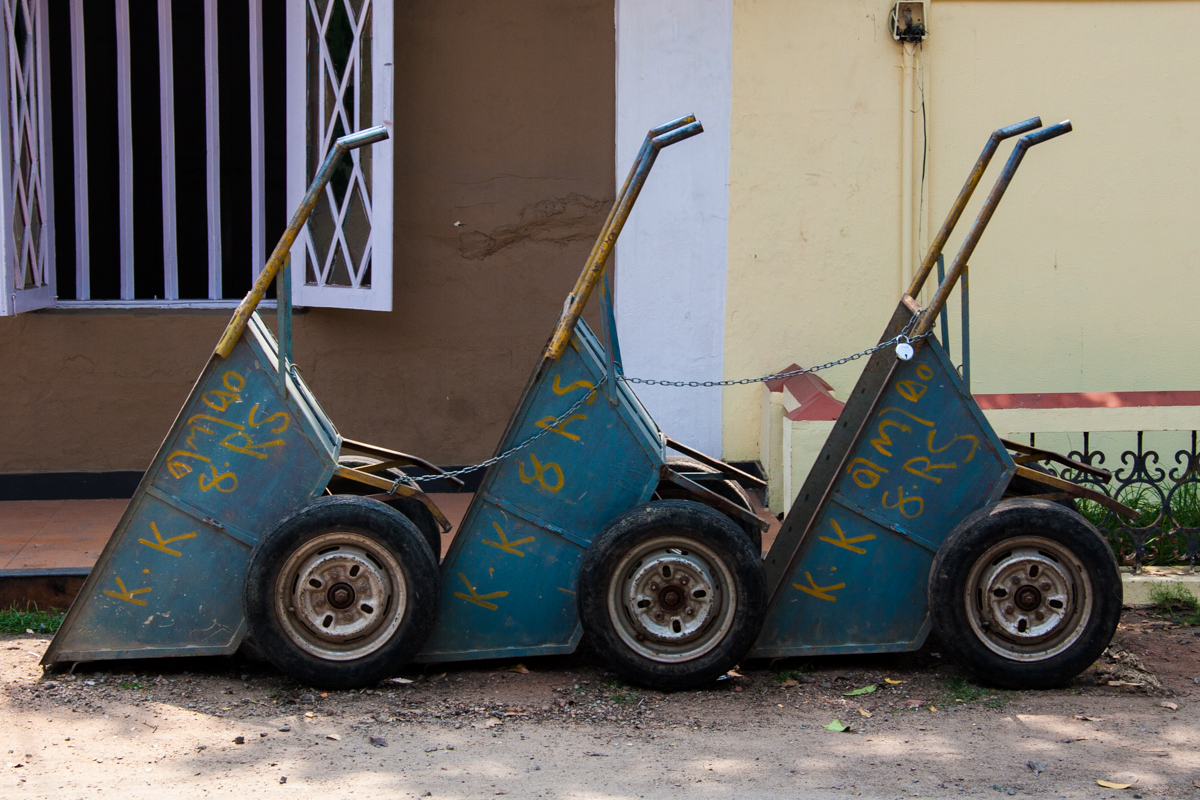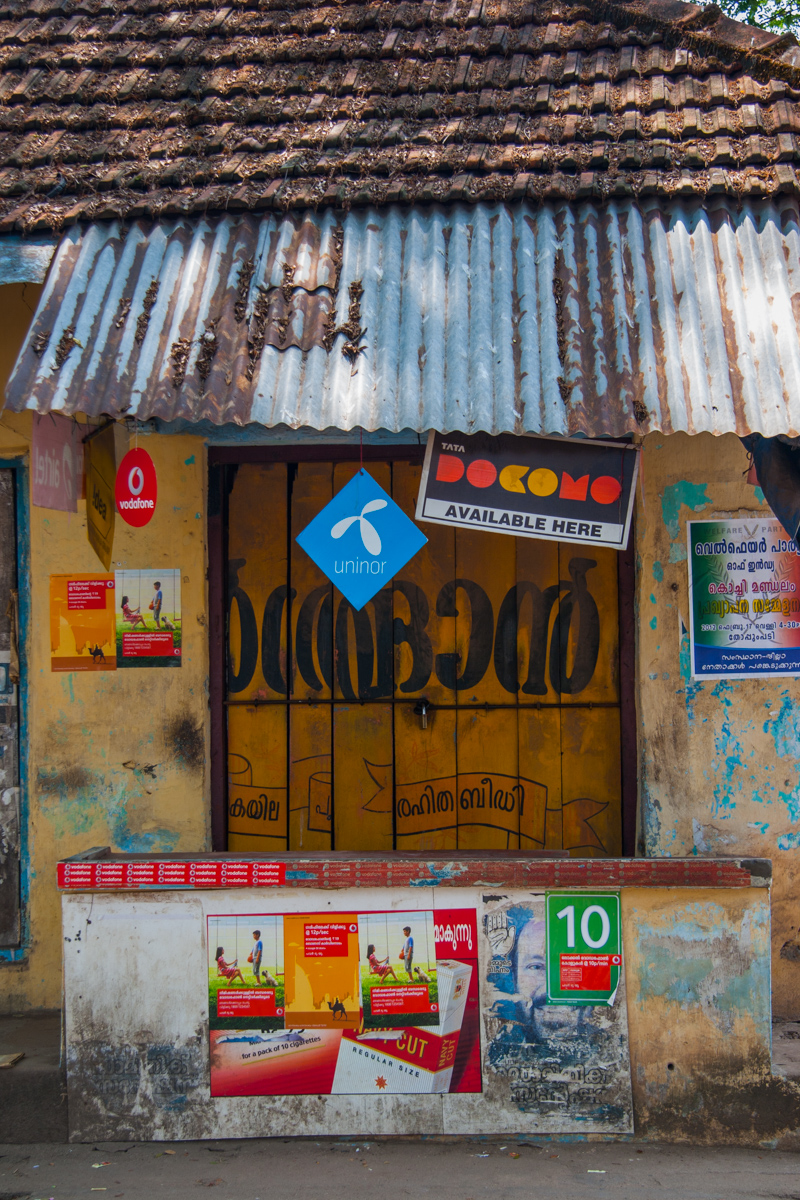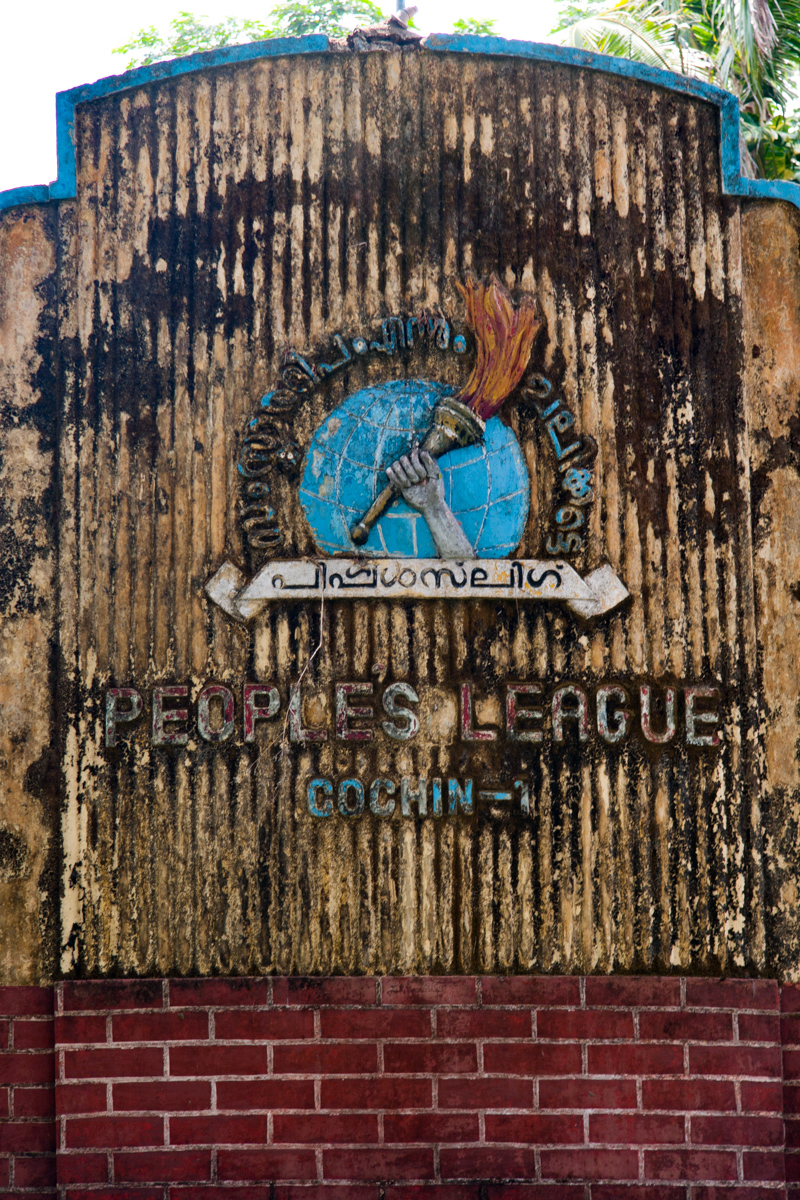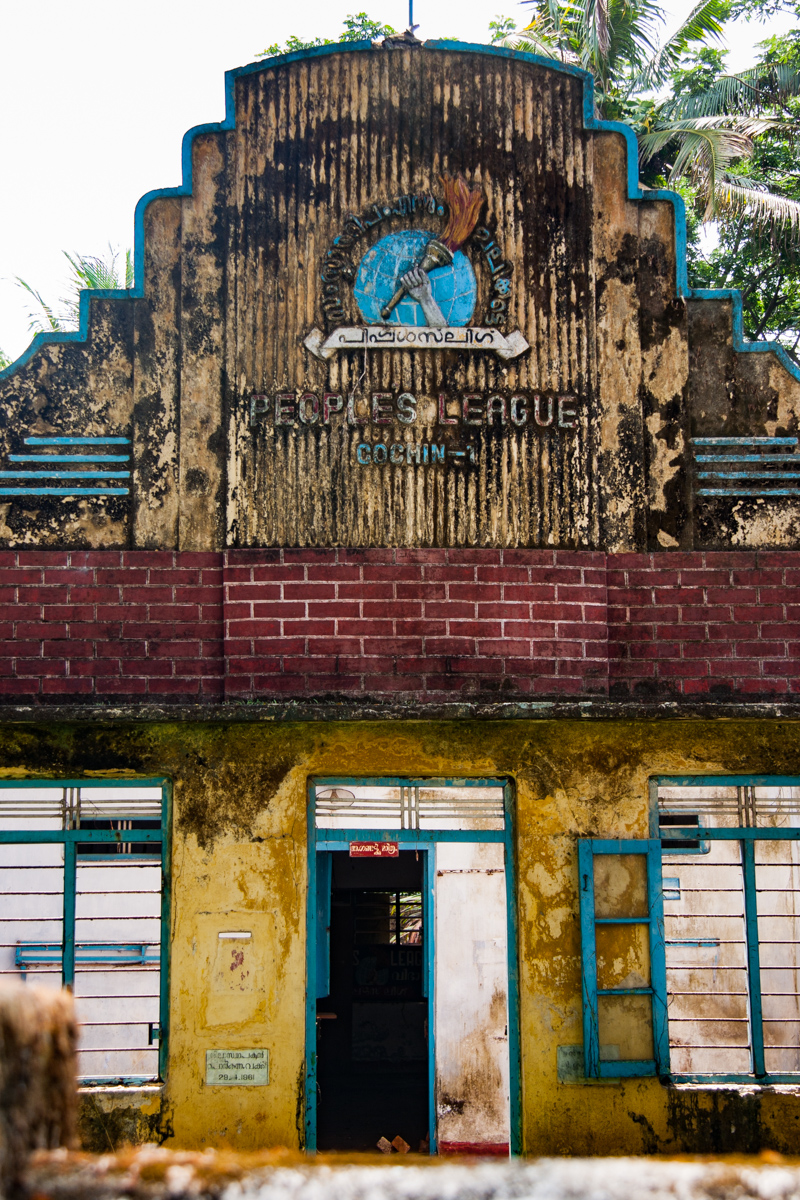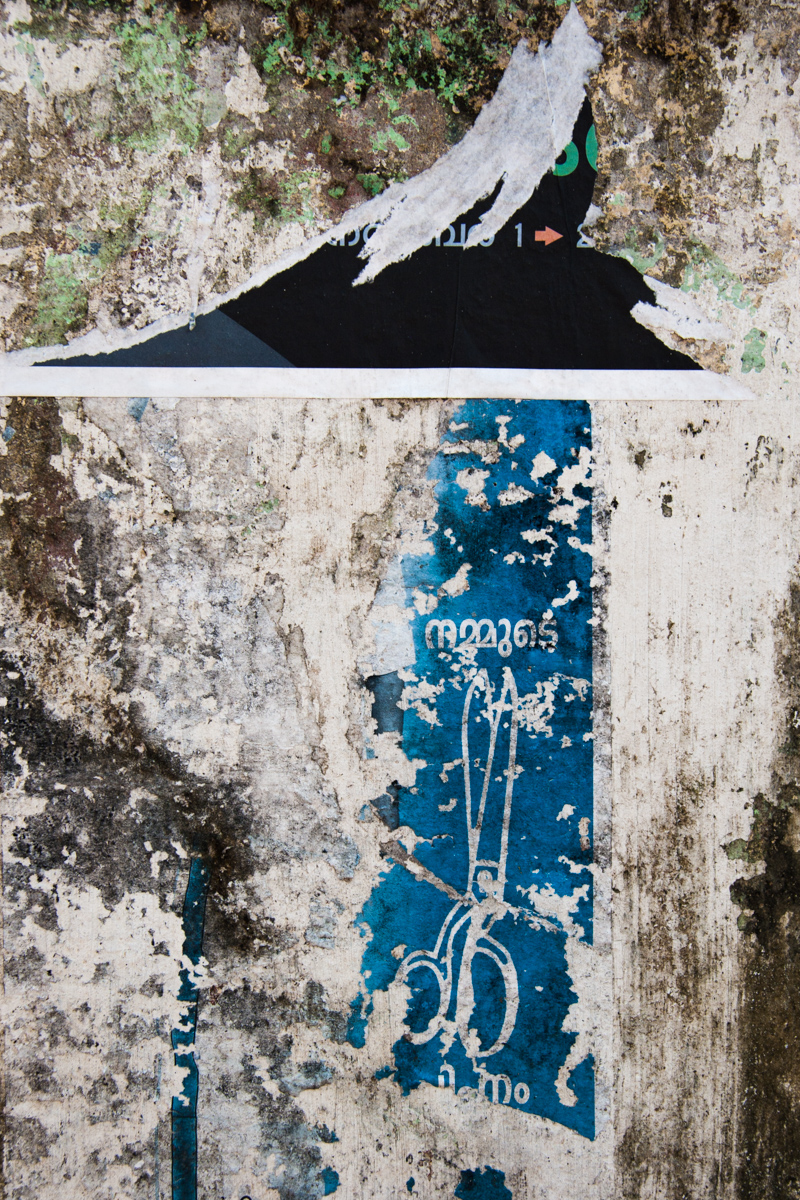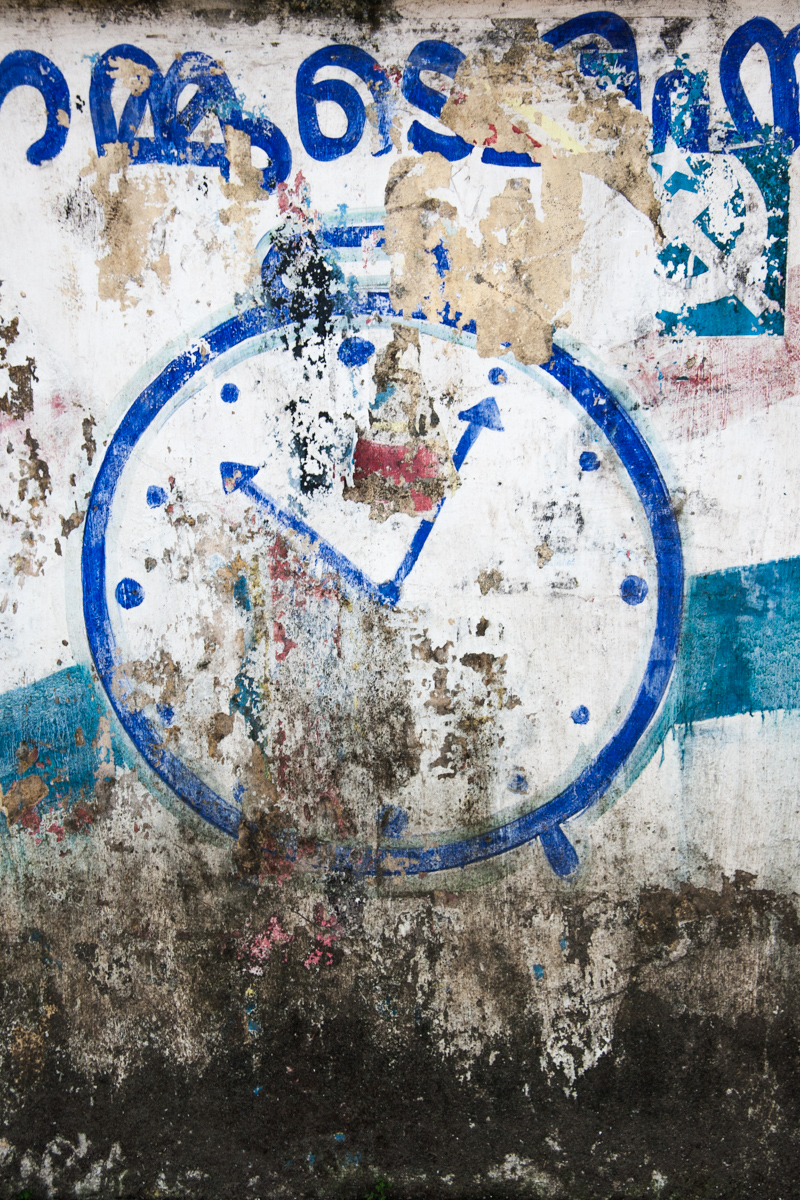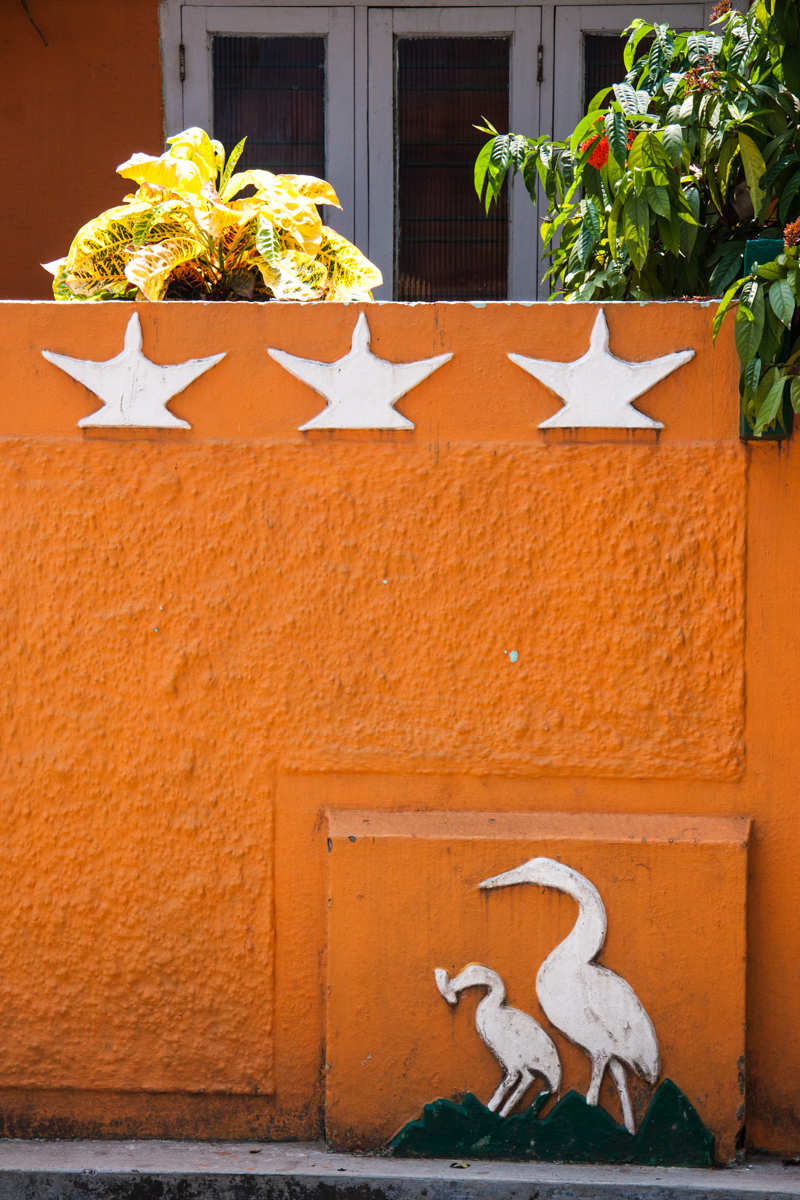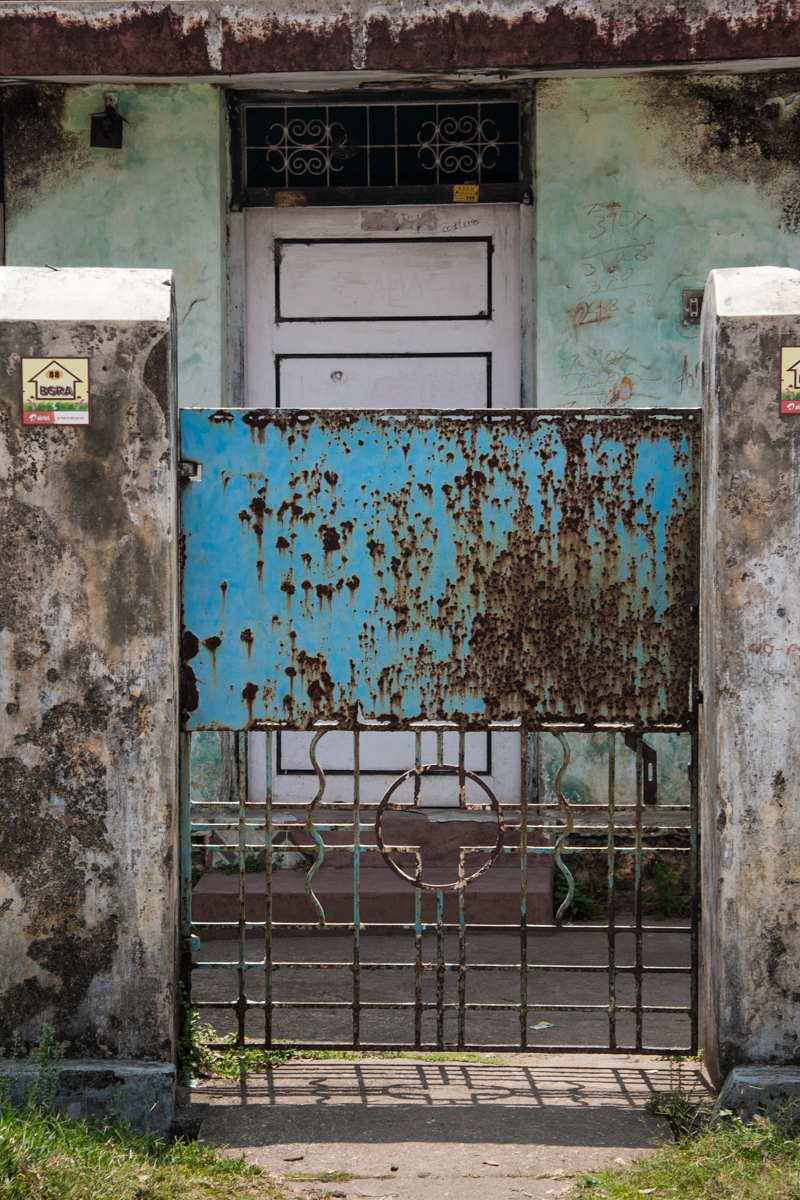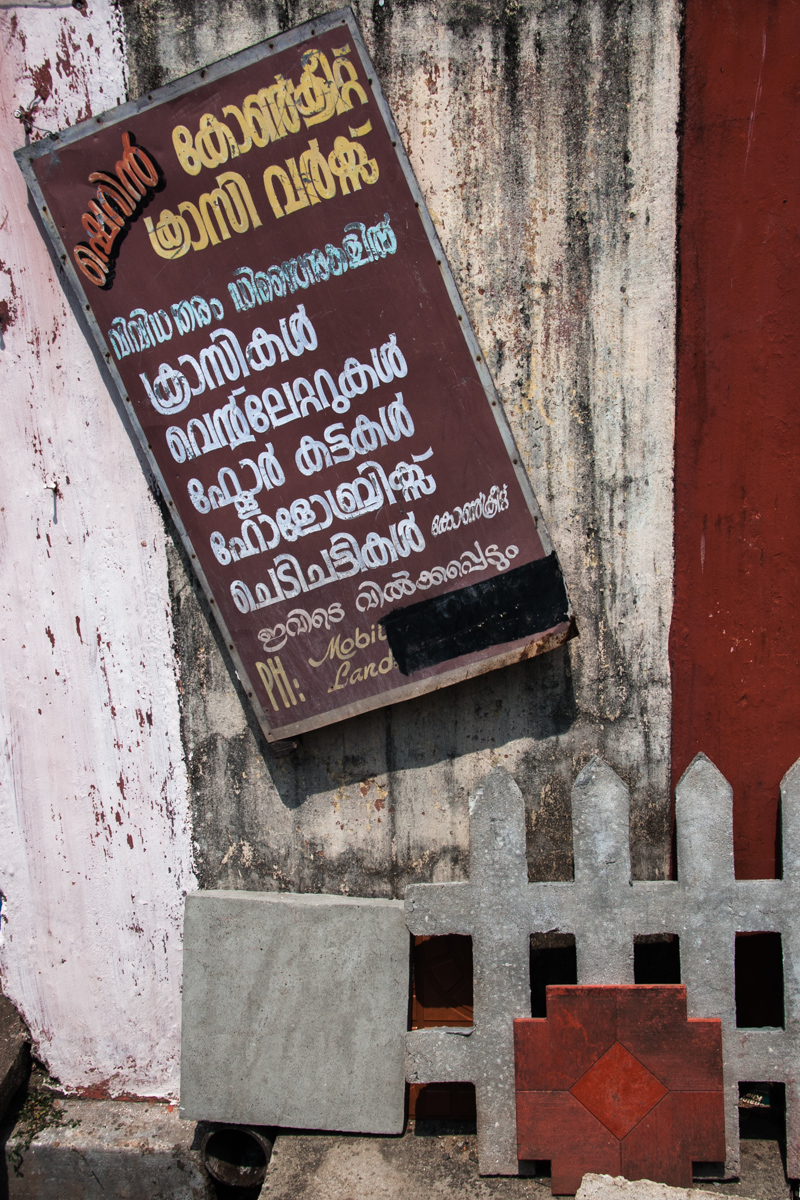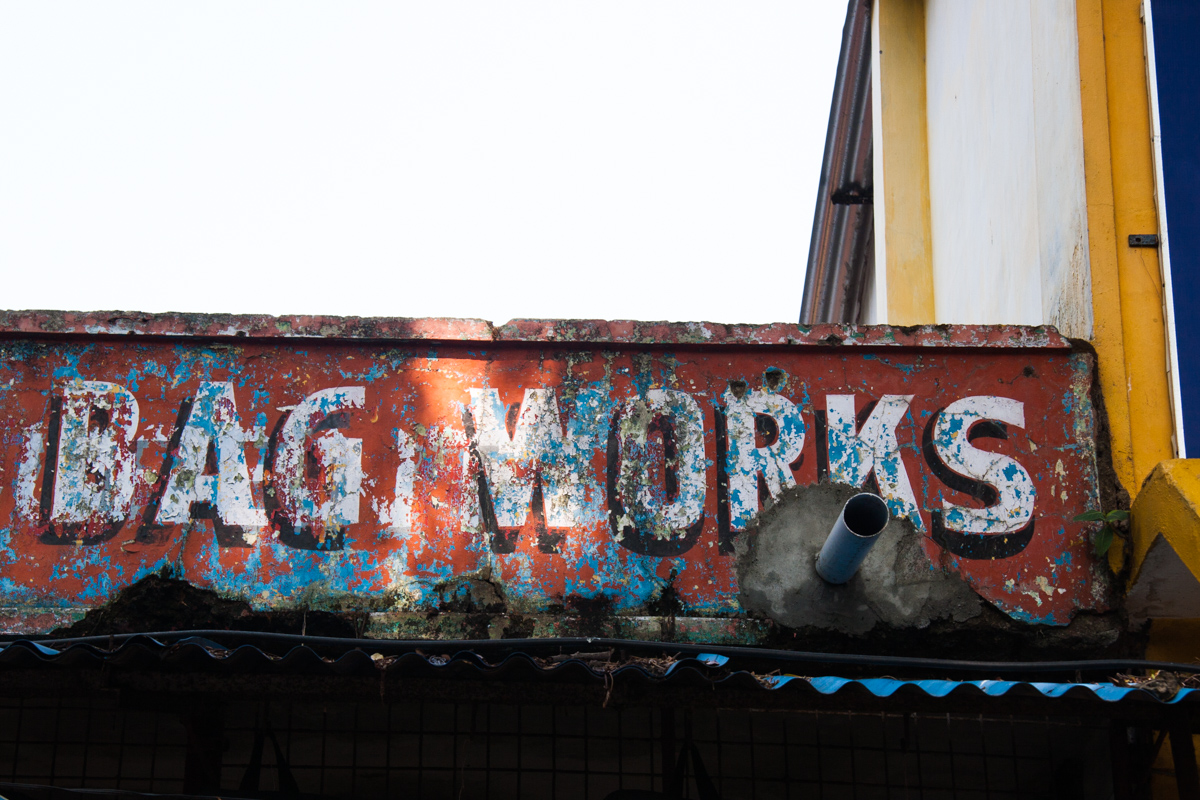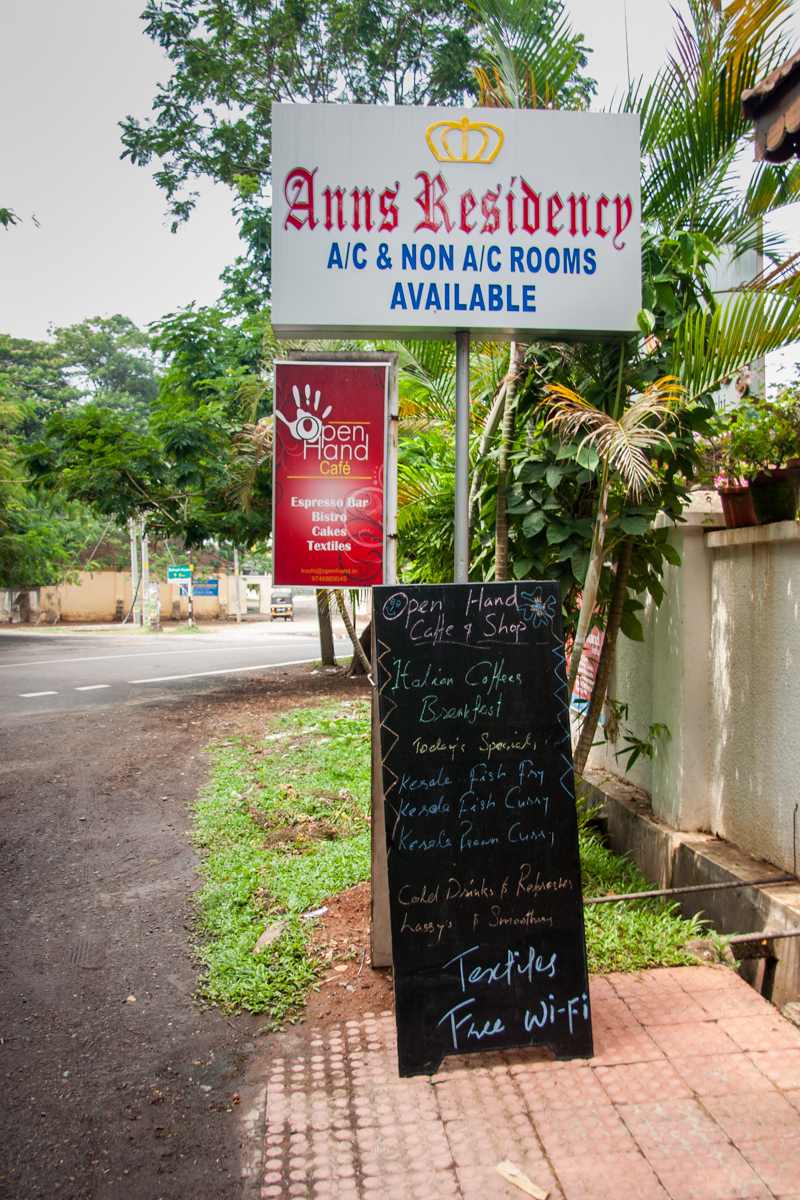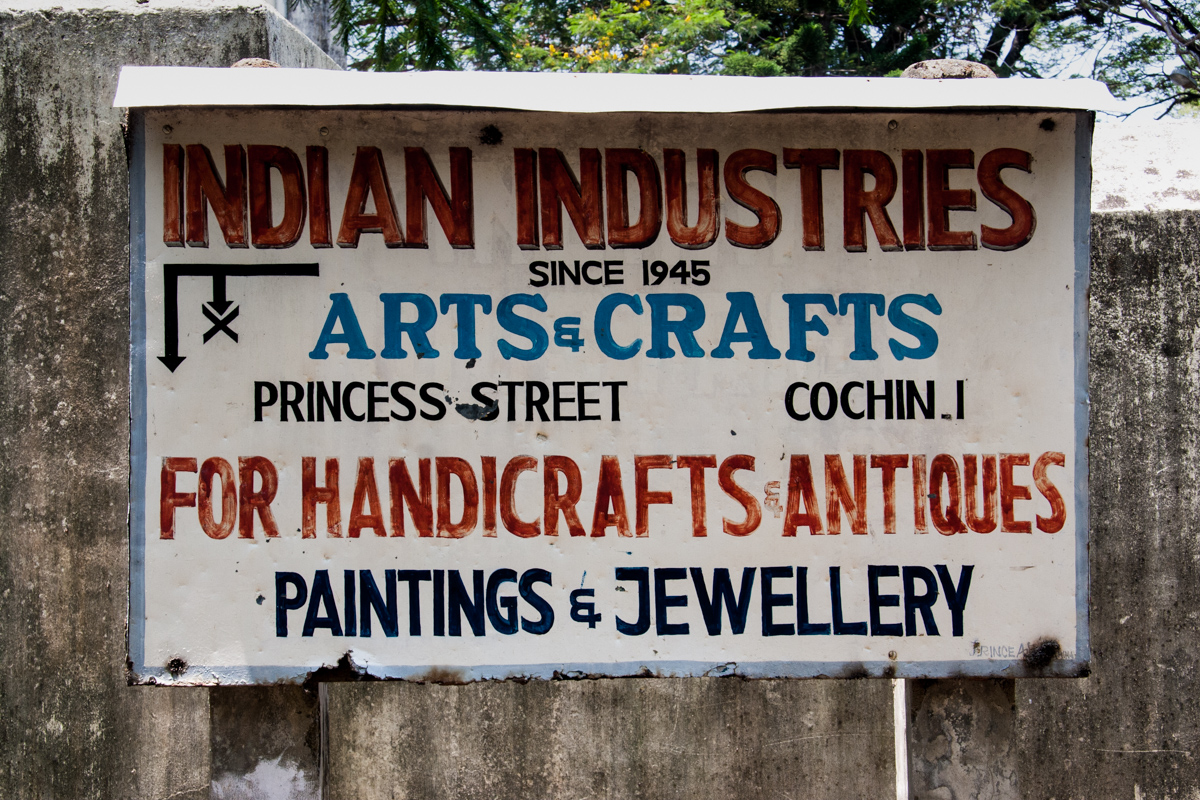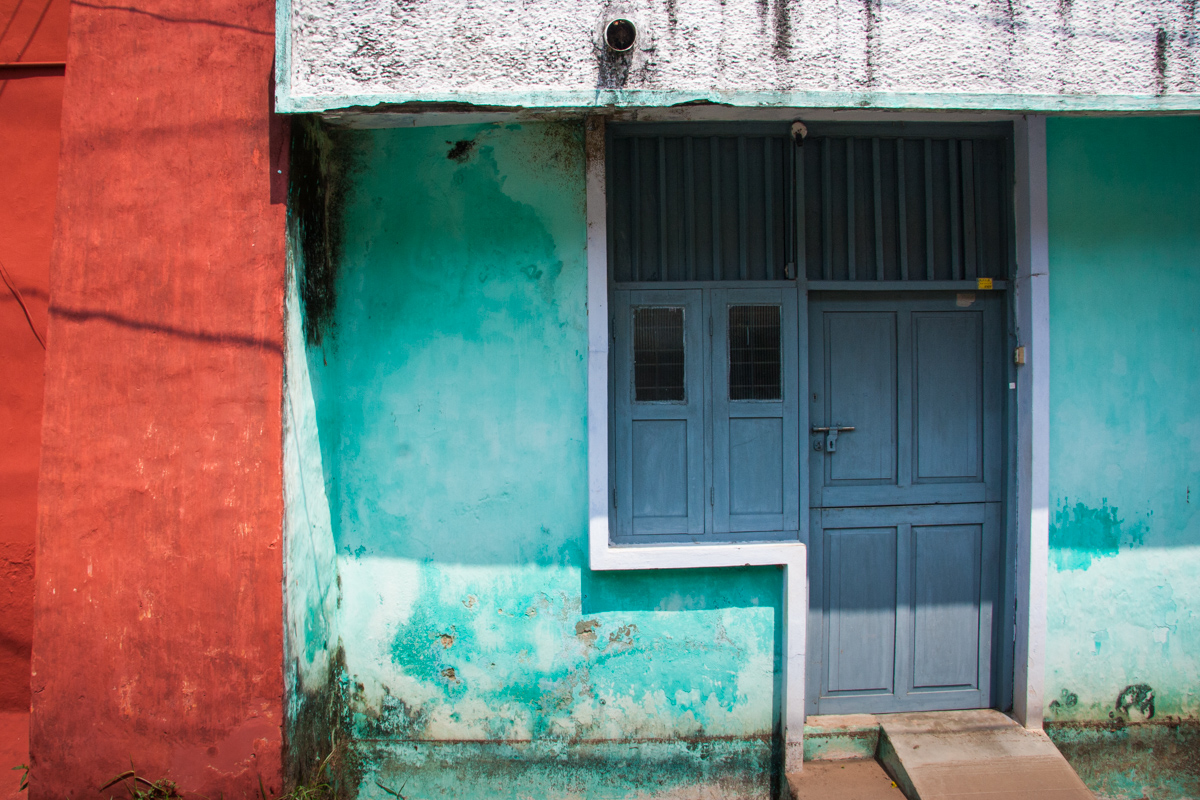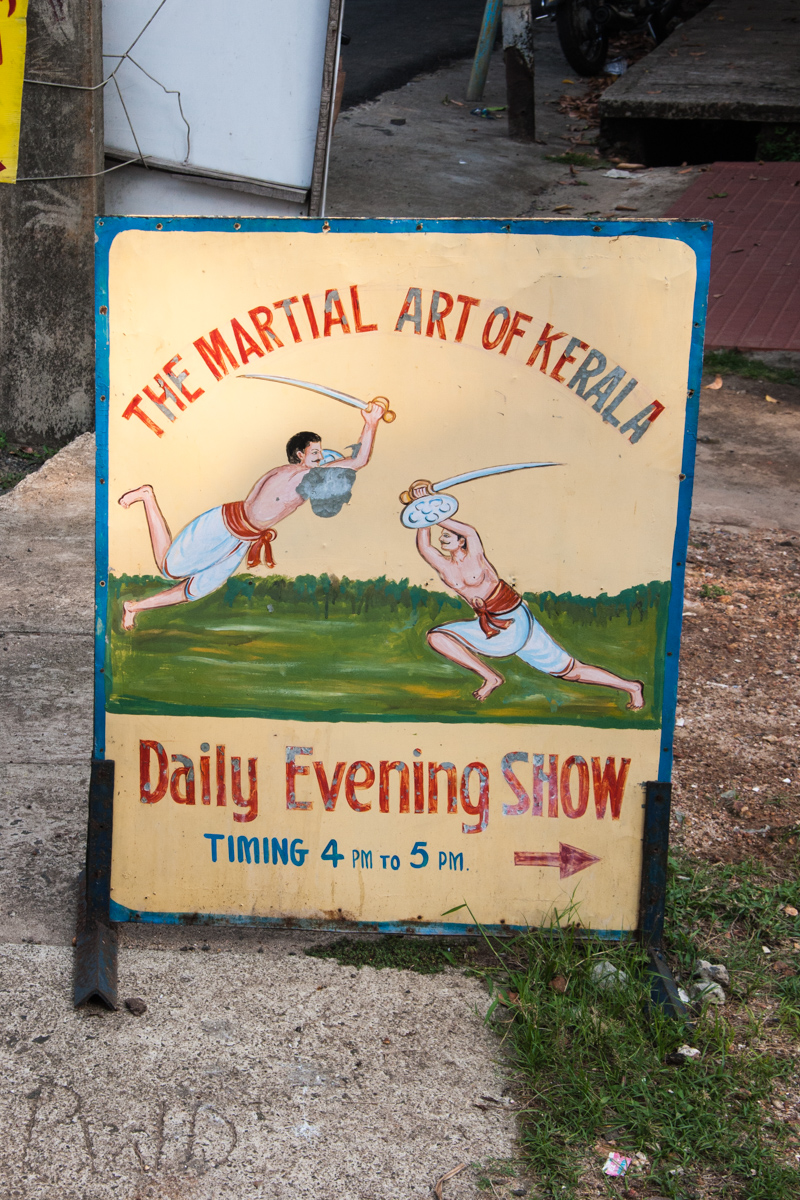Fort Cochin is where we let out our breath. It was our home base for our final week in Kerala, the state on India’s southwest tip. This leg was Dan’s addition to the trip; he wanted to build in a week of chilling out and relaxation at the end in case the first part of the trip was challenging. Smart man, that Dan: we definitely needed a mellow finish to this vacation, and Kerala fit the bill perfectly.
Kerala sits within the region often referred to as the Malabar Coast, which stretches from the southern tip of India up to Goa.The area is known for its production of spices including cinnamon, nutmeg, vanilla, cardamom, and especially black pepper. Other important crops include rice, tea, coffee, coconuts and rubber. Because of this, it has been a center of international trading since at least 3000 B.C., as documented by the ancient Sumerians.
The long history of trading has created a fascinating history, much of which was really surprising to us as we learned more about it. The early trading contact was primarily with the Middle East, and as a result there has been a significant Jewish and Islamic presence here for centuries. Jewish trade connections are recorded as early as 573 B.C., and there has been a permanent Jewish settlement in Cochin since 379 A.D. Arabic traders had also settled here by the 4th century B.C., and over time a substantial Muslim community developed from these roots.
The biggest surprise to me was discovering how long there has been a Christian population here. St. Thomas the Apostle is believed to have traveled to Kerala in 52 A.D., and his followers established the Syrian Christian community that remains there to this day. My surprise is nothing compared to how Vasco de Gama must have felt when arrived in 1498 A.D. to stake a claim on the spice trade for Portugal, only to discover that Christians had already been there for about 1400 years. Under the Portuguese, Cochin became the first European colony in India in 1505, and the Dutch and then the British also controlled it before India regained independence in 1947. This complicated mixture of influences is very much apparent in the architecture and cuisine in Kerala, both of which we enjoyed immensely. Especially the food.
Kerala’s recent history is unusual as well. It has the distinction of being the first place to democratically elect a Communist government in 1957. Two different Communist parties continue to dominate the state’s politics, with several other left wing parties in the mix. Kerala also has a long history of progressive attitudes toward education and literacy dating back to the pre-colonial era. These factors contribute to some striking demographic differences between this state and the rest of India. Birthrates and infant mortality rates are considerably lower here, and average life expectancies are among the highest in India at 74. The literacy rate is over 90%, and women enjoy a high level of equality and access to education and work opportunities. The infrastructure, particularly the roads and public utilities, is much more developed here than what we saw in the north. In general, average people here seem quite a bit better off than in other parts of India.
The towns of Fort Cochin and Mattancherry, are part of the larger city Kochi, and share the landmass on the western side of Vembanad Lake, along the Arabian Sea. The Portuguese established their presence in Fort Cochin as a prelude to asserting colonial control. Their influence, as well that of the Dutch and English that followed in their footsteps, lend a very European feel to this area. Add in the rusty, crumbling decay of the buildings due to the constant humidity, and it’s rather like an Indian version of Venice; in other words: photographic paradise for me.
We decided to try our first homestay, which is basically an Indian take on a bed & breakfast: you stay in a family home, with some or all of your meals provided by the hosts. I gather the level of actual interaction with the family varies, and it’s probably used simply as a marketing term in some cases.
We were lucky enough to find one, Beena Homestay, which has to be one of the best incarnations of the homestay model. Beena and her husband rent out several rooms in their lovely home in a quiet neighborhood about a kilometer outside of the town center. The room rate included utterly delicious home-cooked breakfast and dinner, mainly traditional Keralan dishes, which is served family-style at a long table where all of the guests gather round at mealtimes. Sharing meals with other guests made for a convivial and homey atmosphere. We had some great conversations and an all around good time with other travelers from far and wide. Beena and her husband are on hand during meals, often playing with their adorable young granddaughter, and always happy to answer questions, provide recommendations, or help with arrangements for tours and transportation. These are folks who truly understand hospitality.
Our agenda here didn’t extend much beyond wandering around, taking photos, eating, and chilling out. Fort Cochin is a very walkable town. There are some interesting sights to see, but we spent most of our time walking along quiet streets, photographing buildings and signs, and stopping frequently for snacks and cold drinks. The weather was quite warm and extremely humid while were there, which dampened our energy a bit, but gave us lots of excuses to stop and have fresh lime sodas (one of mankind’s best inventions) and snacks.
We spent the afternoon and early evening of our first day there, which happened to be Palm Sunday, walking up the beach road toward Mahatma Gandhi Beach. The area around the beach had a bustling, festival-like atmosphere, with many families out for a stroll and buying ice creams from carts and a string of vendors with their goods spread out on blankets along the pedestrian path. As it began to get dark, we decided to walk back to Beena’s from the waterfront. On the way we passed a long line of people who were carrying candles and making their way along a series of tableaus set up on the street that I believe represented stations of the cross.
Later that evening, we were settling into our room after dinner when we were treated to the most dramatic thunderstorm I can remember. We moved out to sit on the deep, covered porch to enjoy the coolness that the storm brought. The oppressive humidity that had been hanging in air all day became a bucketing downpour, and each flash of lightning lit the entire neighborhood like a giant strobe light. I don’t think I have ever seen so much rain pour down so quickly.
The next day, we made arrangements for our tour to Munnar later in the week, and then drove south to spend a couple of days in the Backwaters near Aleppey. We were back in Fort Cochin for our last day in India, for one more lovely day of wandering around town, with a bit of shopping for textiles and a few more lime sodas thrown in. Our last stops were a traditional Kathakali performance, and then one final dinner at Beena’s before we headed to the airport for our 4 a.m. departure. We could happily have stayed longer and wandered around Fort Cochin and Mattancherry for many more days, and I hope we have a chance to return.
